Have you ever wondered what would it look like if we could travel back in time? Did you wish you could see for yourself how people from the past lived their lives? If so, you are in luck. It is very much possible to go back to Victorian Era, without a time machine. All you have to do is to travel to Ironbridge in Shropshire, England and get to Blists Hill, a former mining town to see what life was like in Victorian Era.
Blists Hill – Take A Journey Back in Time
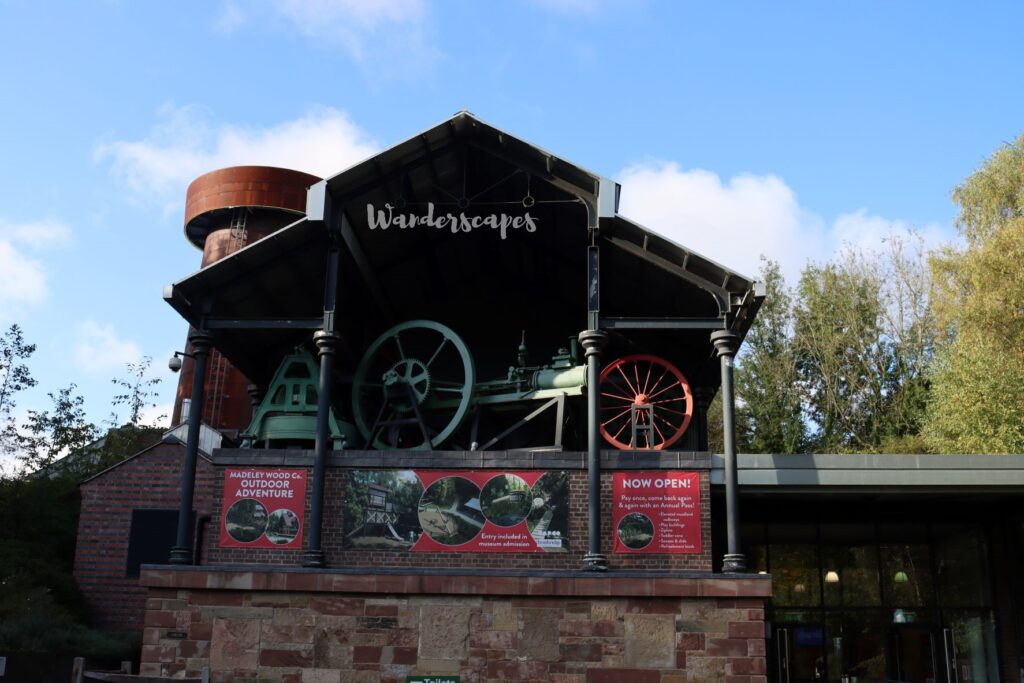
Man’s ingenuity never ceases to amaze us. When we heard about the live, open air museum in Blists Hill, we knew we had to visit it. It was something we never heard or saw before. What can be more thrilling than travelling back in time and experience what life was like in those times? It is definitely more interesting than reading about it in a book or seeing it in a display. So, on the second day of our weekend trip to Ironbridge, we decided to check out the Blists Hill Victorian Town for ourselves. By the way, if you haven’t read our previous blog on Coalbrookdale and birth of industry, this might be a good time to read it. It will give you a background information on the place and its history.
Step Back in Time to See Industrial Revolution
Bilsts Hill Museum is a part of Ironbridge Museums and you can purchase the ticket for all the museums or opt to buy them separately. Find the ticket details here. You might need to select a timeslot as well when you visit Blists Hill. Once you show your ticket and gain access, you’ll enter a small AV room where they show a short audio visual of Shropshire’s industrial past. It gives us a good idea of how Shropshire played a pivotal role in shaping the country.
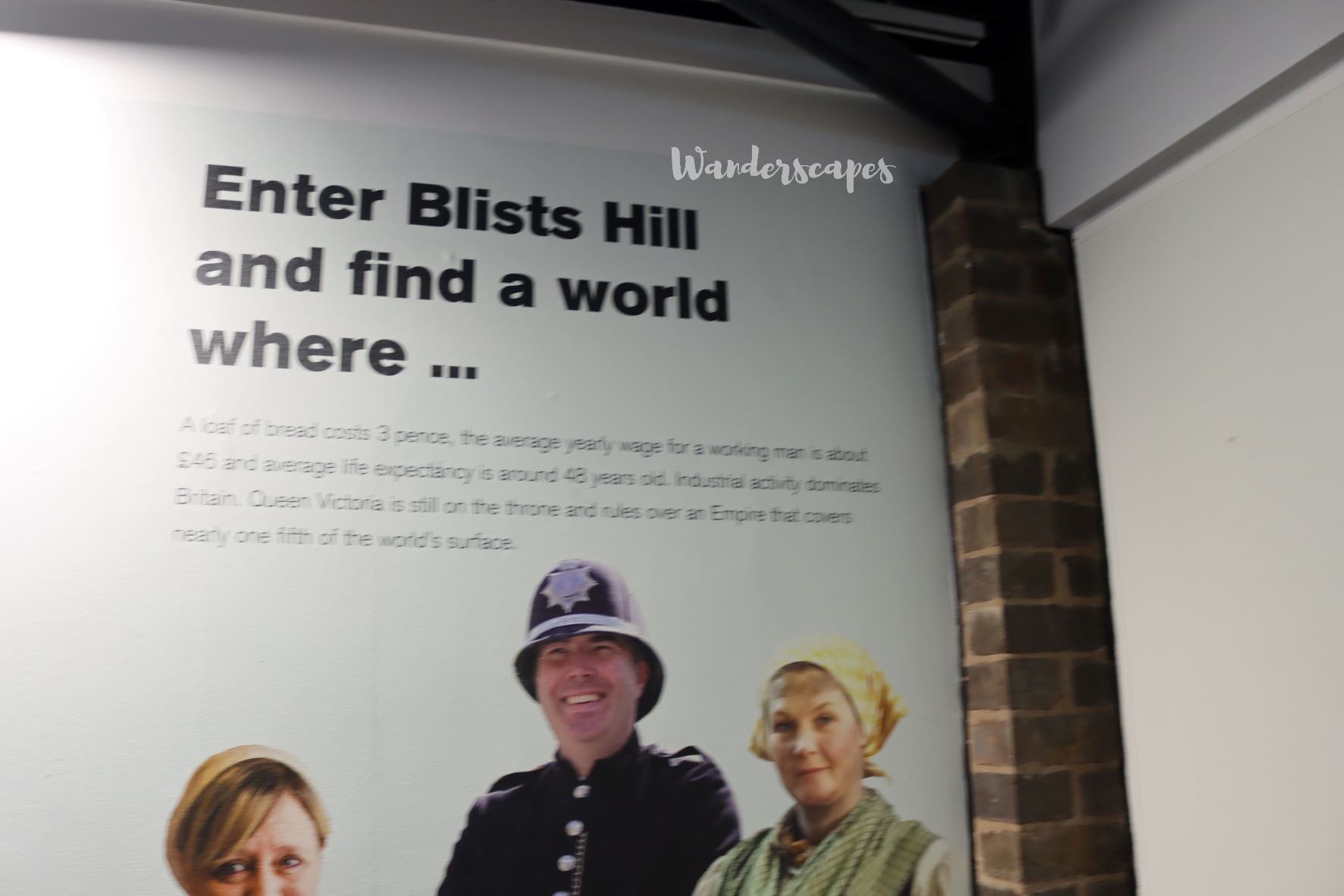
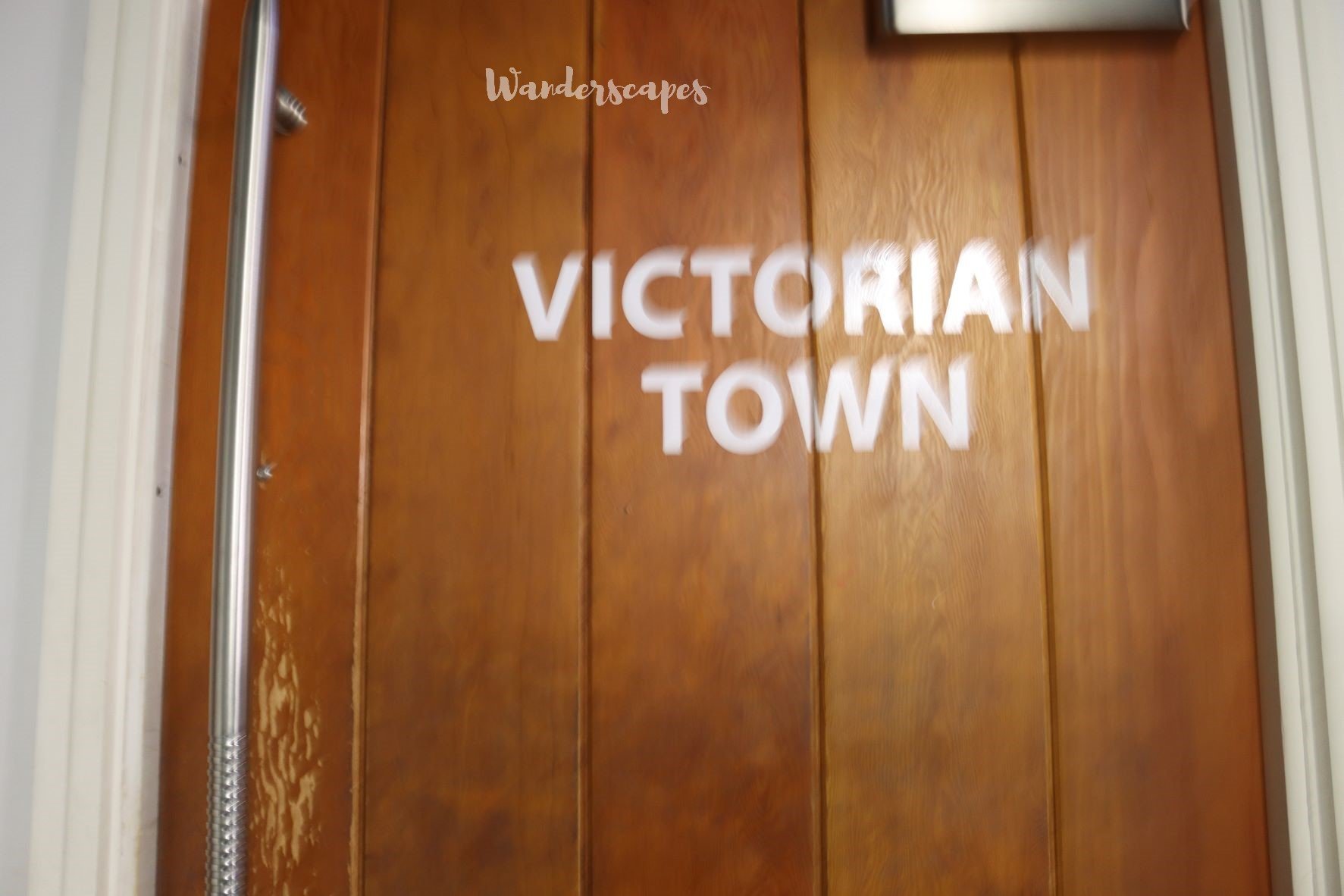
Once you finish watching the short film, proceed to the Victorian Town. It is just like opening a door into a whole new (in this case, old) world.
Blists Hill – A Victorian Town in the Modern Era
Blists Hill was home to several coal mines and other industries during the 1800s to mid 1900s. Later when these industries shut down, it was decided to turn it into a living museum so that people can come here and experience for themselves the life during Victorian times.
The first thing we see on the other side of the door is a railway station. It reminds of an old railway station that’s familiar to us from the period films and pictures. There were a couple of wagons/engines on the premises to give it a wholesome feel. Once we cross the railway line and reach the other side, we can see a huge board displaying the list of attractions in Blists Hill. It also has information about any special performances or shows scheduled for the day.
A Horse and Policeman
Soon we were engulfed in the sights and sounds of the town. A lady was walking a huge horse down the street. Modern day spectators were looking at them in awe. Children were specially thrilled to see the horse. A policeman was patrolling the area and he greeted us warmly. We had a short conversation with him and he was glad to know that we are from Liverpool, the busiest port in the world. One thing that he told us is worth mentioning. He said: ‘when the Lord made time, he made plenty of it. Just take it.’
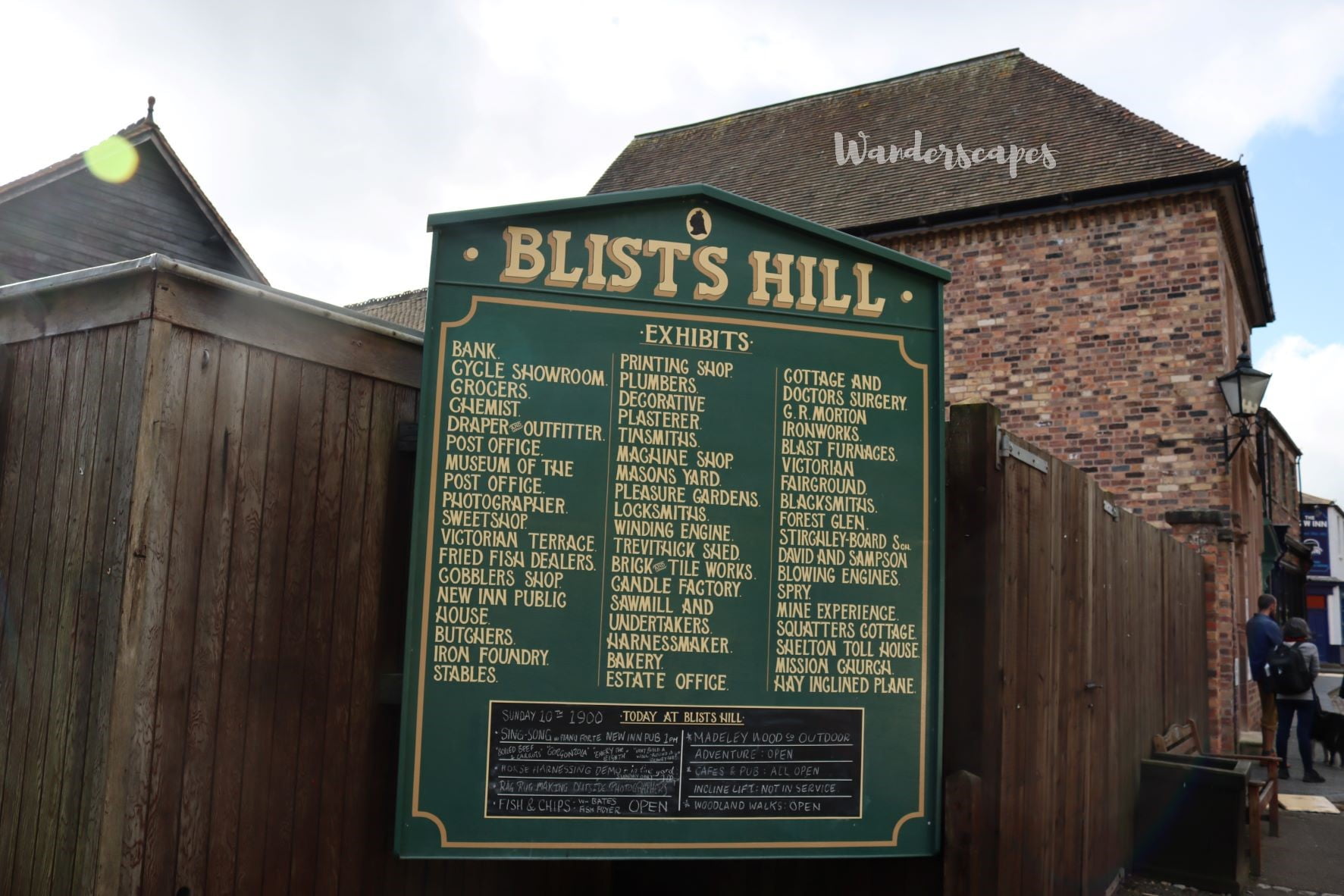
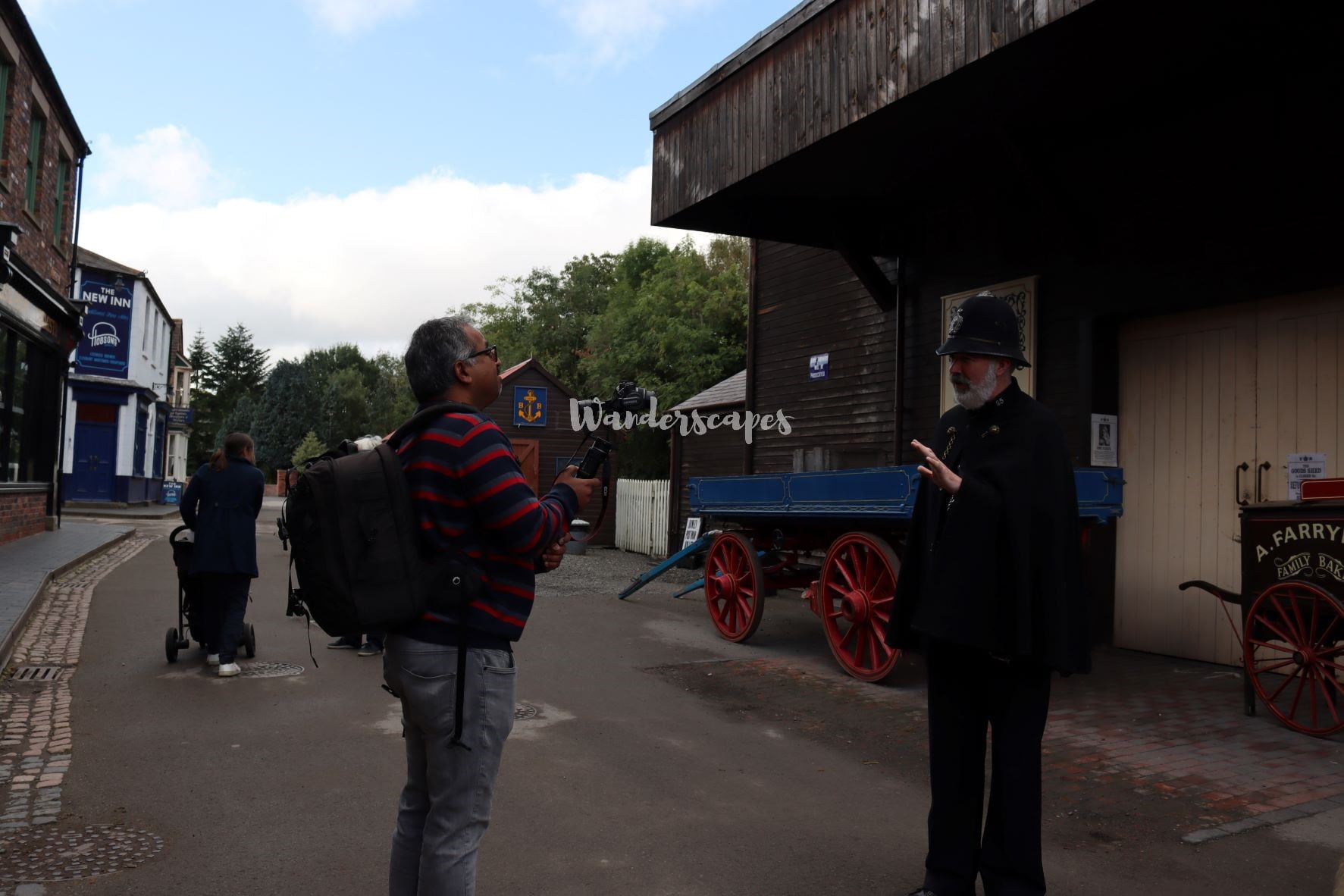
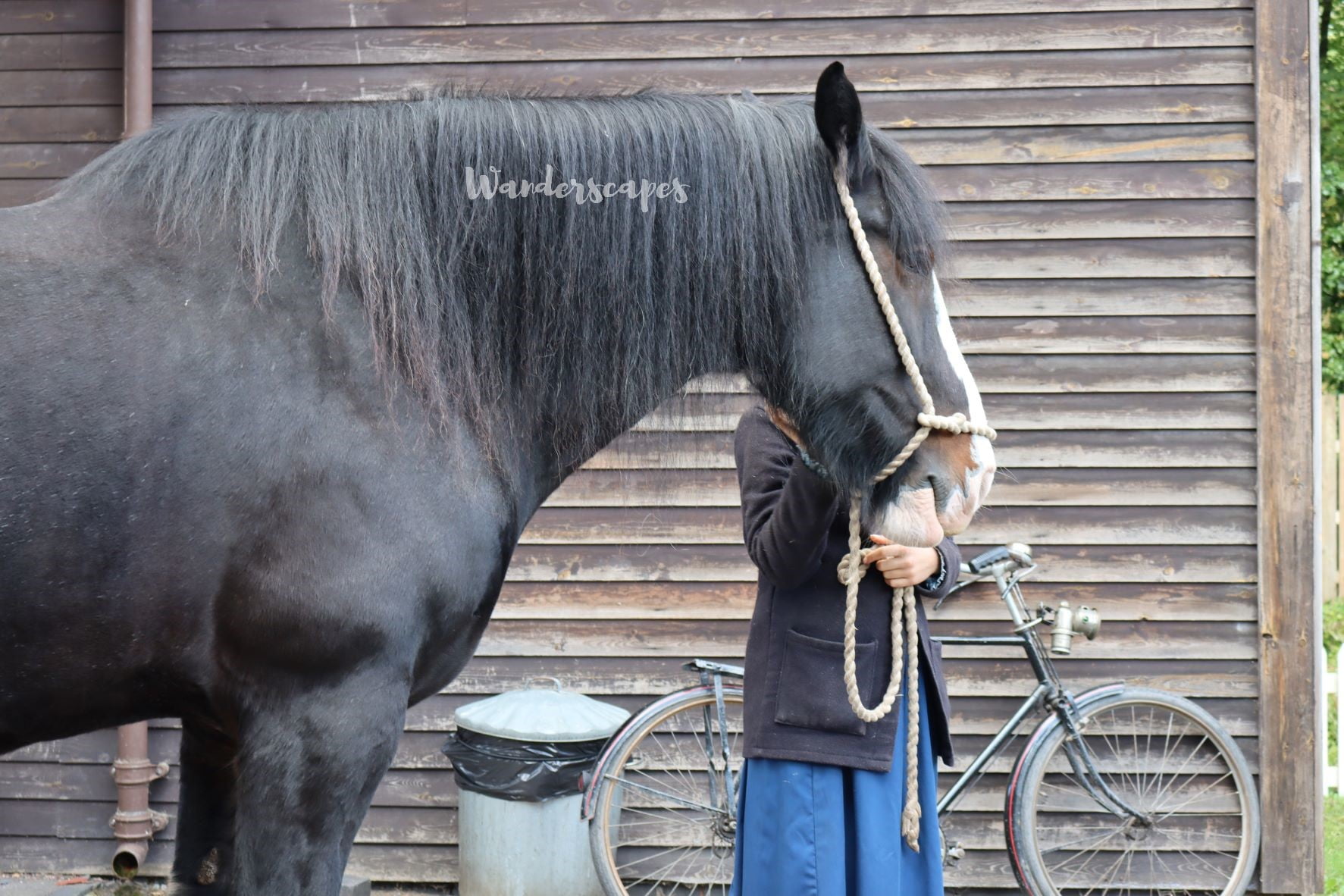
What a wonderful thought, isn’t it? We are often in a mad rush to see and do everything that we forget to pause and smell the roses. That was a beautiful reminder to take things easy and enjoy what we have around us. Anyway, after the pleasant conversation with the policeman, we set off to the bank in the town.
A Bank from the Past
The Blists Hill Victorian town has its own bank. It was brought from somewhere else and built here brick by brick to give us an idea of how a bank functions during the Victorian era. This is a working model of a Lloyds Bank branch and hence we will see everything we expect in a bank in this branch too. There are counters and a couple of tellers behind them. We also saw a coin box where they kept coins of various denominations such as shillings, florin, penny, farthing, and half crown.
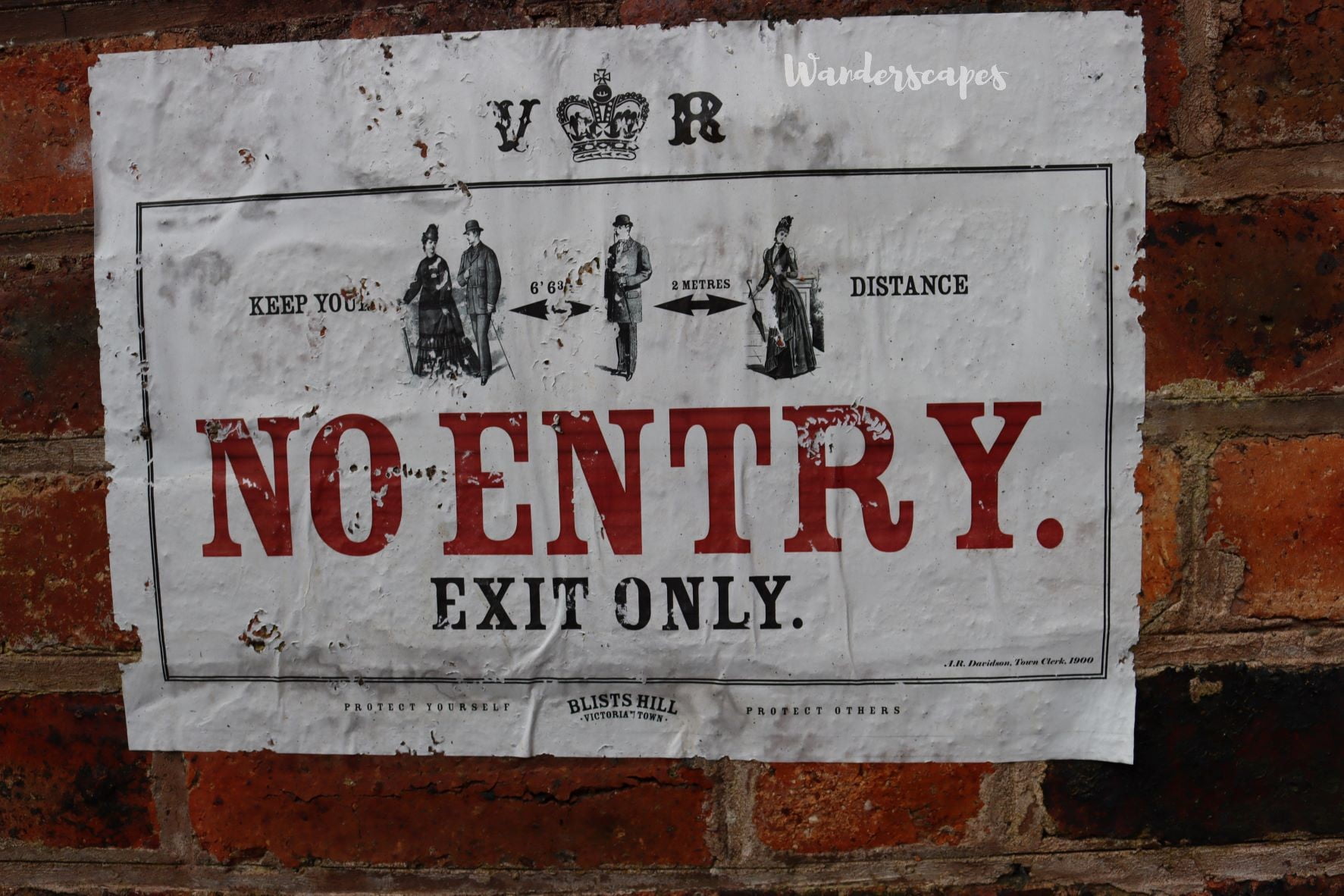
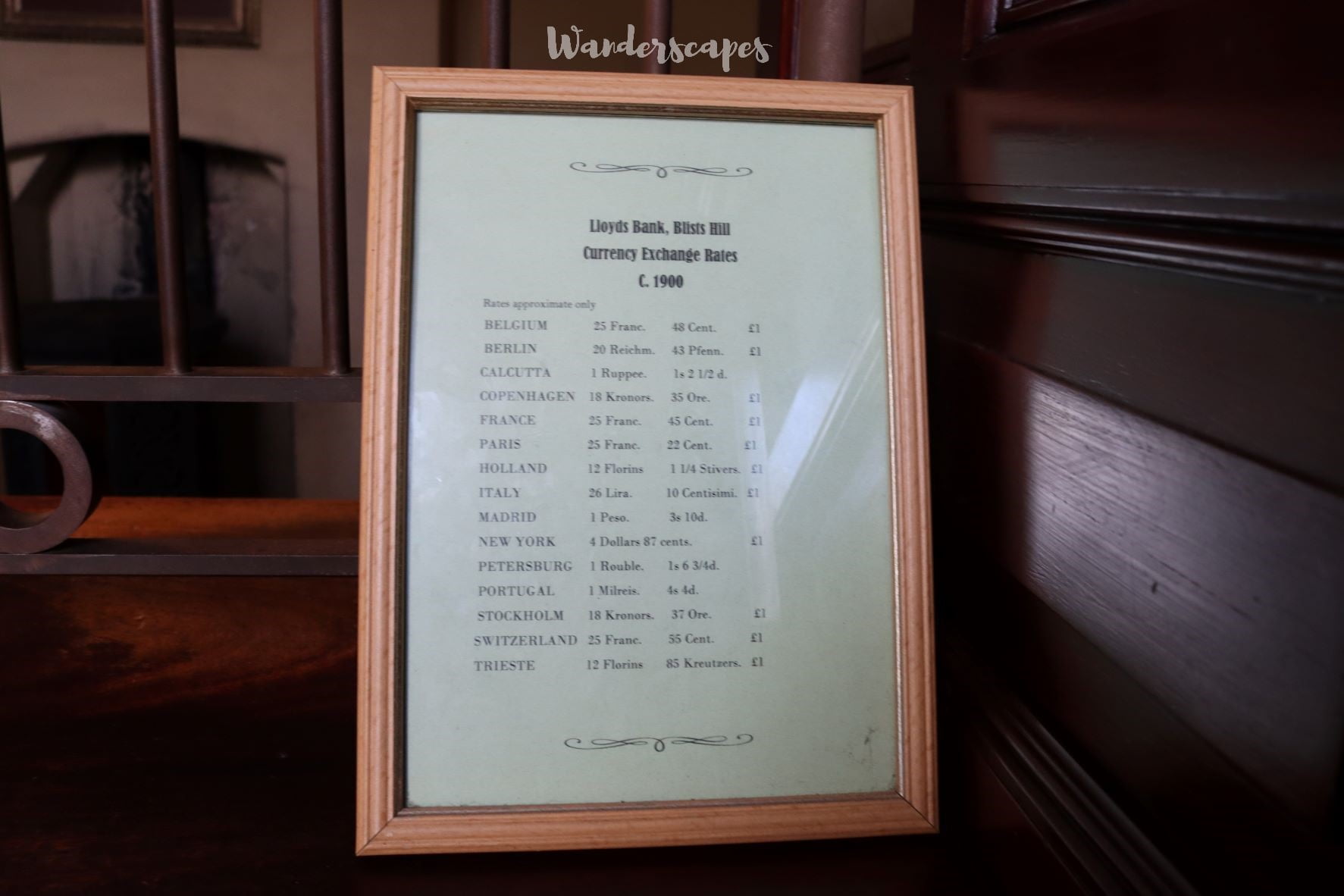
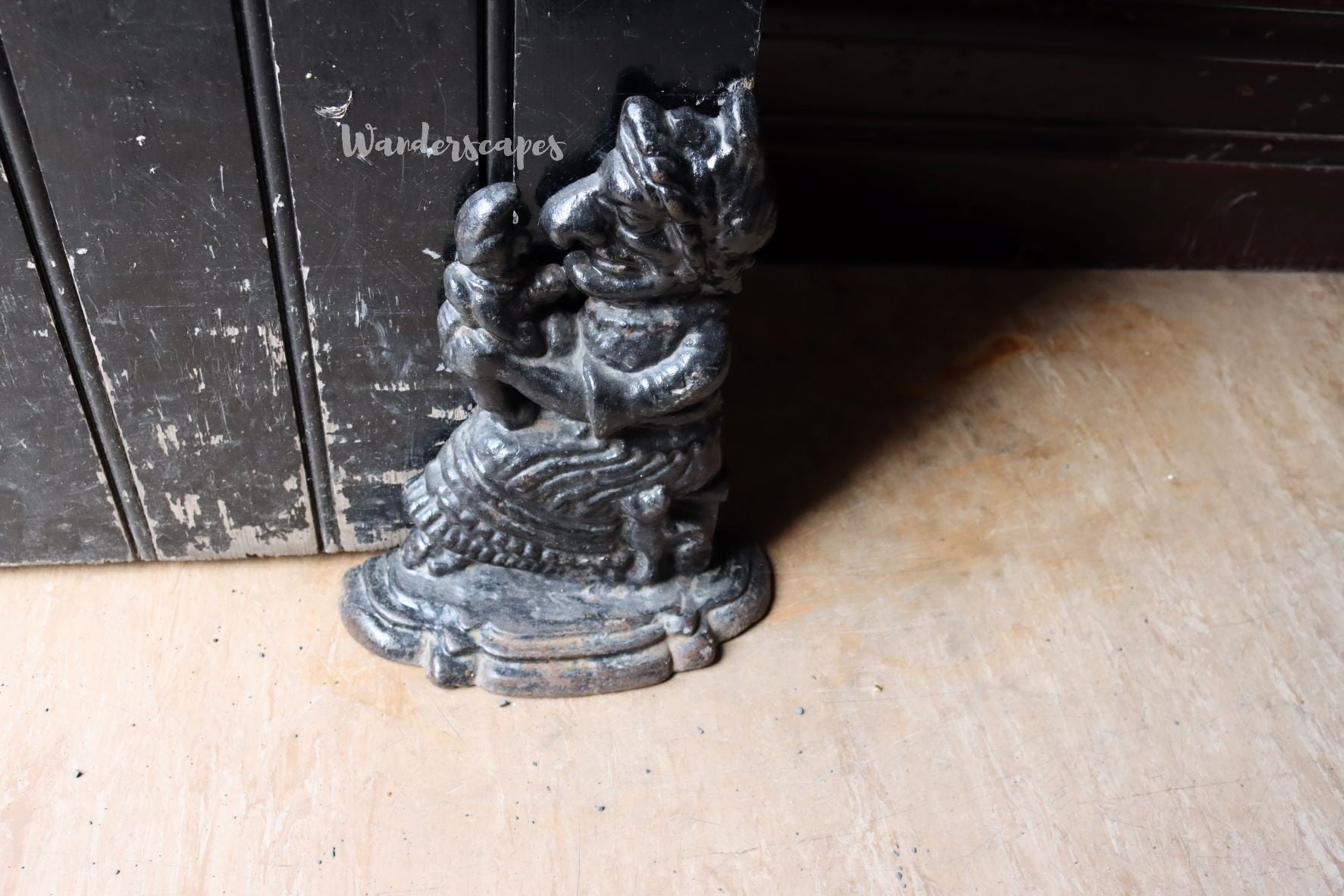
The teller told us that in those days only the rich people could afford afford to open a bank account. The ordinary people or working class never had enough savings left to open an account with the bank. Instead, most of them depended on post office savings to keep whatever little savings they managed. qSo, it wouldn’t be wrong to say that banking was affordable to the rich alone in those days.
Another interesting feature of the bank is that we can get Victorian era coins in exchange for present day money. Of course, these coins are not valid outside, but can be used to buy items from various shops across the town. Or we can keep it as a memorabilia.
A Cycle Repair Shop
After visiting the bank and buying some old coins, we went to our next stop – a bicycle repair shop next door. Here we could see models of different brands of bicycles such as Royal Enfield, Hercules, Dursley and more. There was no one in the shop and so we couldn’t find more details about the charges for repair. But we did get a good idea of how a typical cycle repair shop looked like back then.
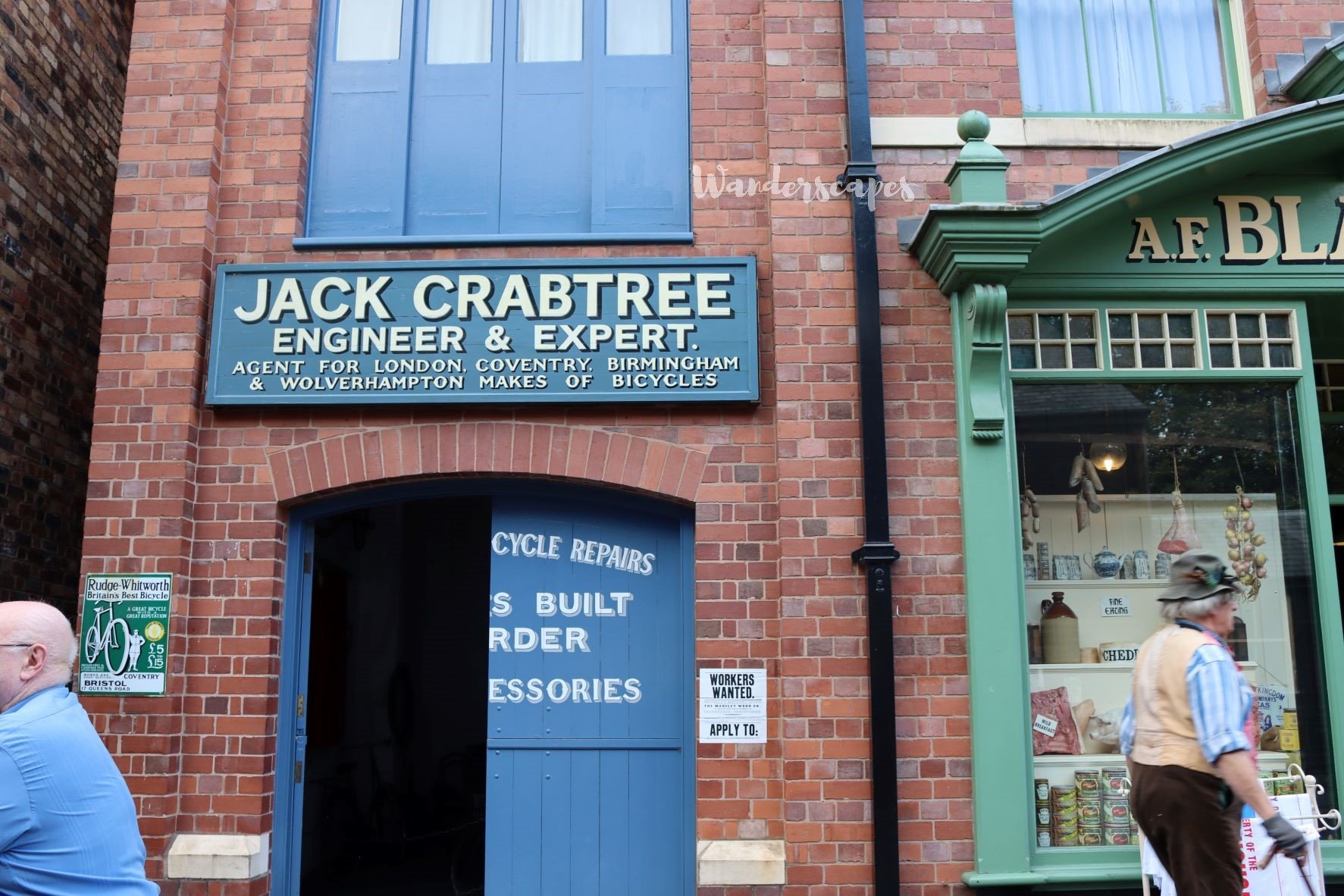
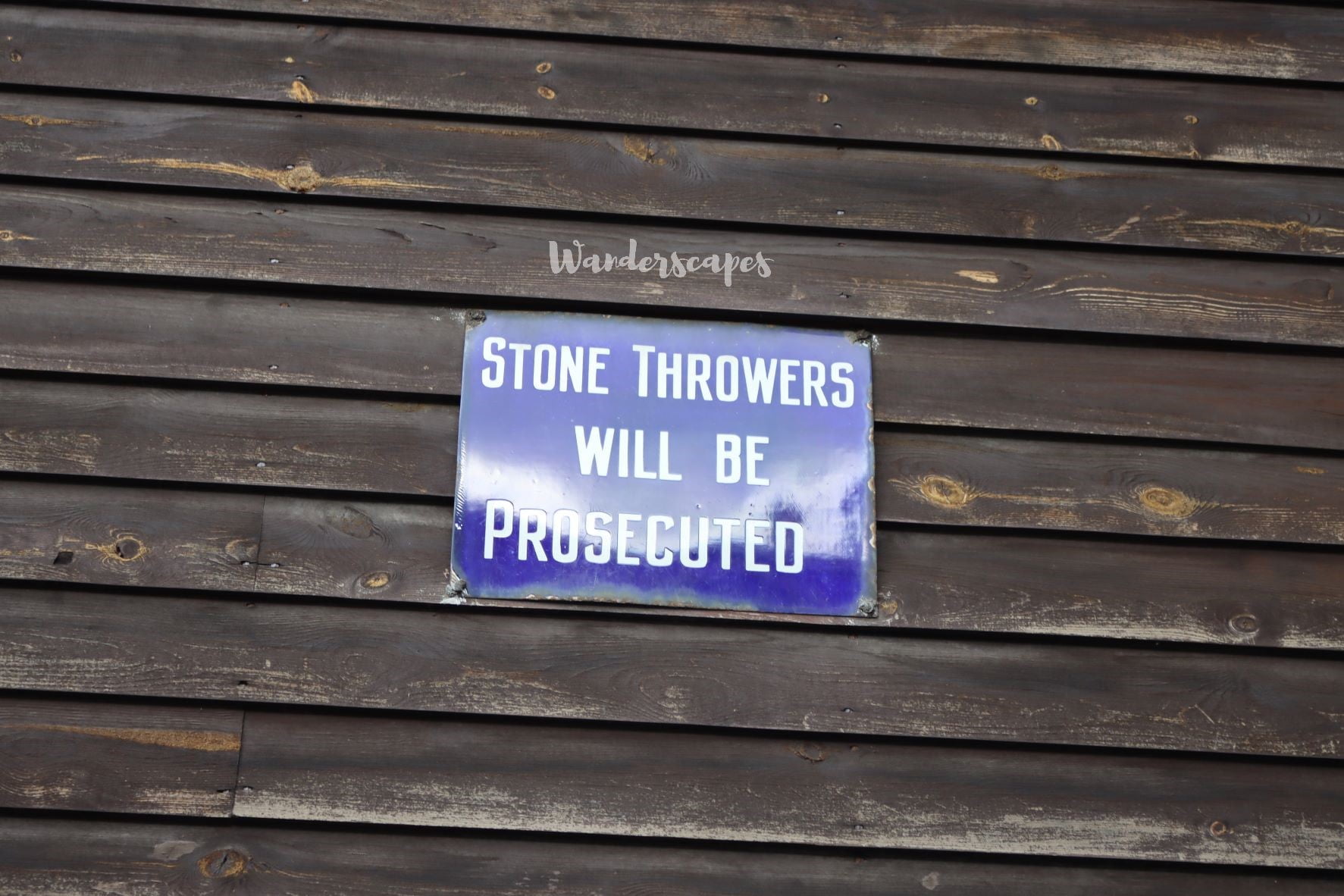
All over the streets we could see was the posters from Victorian era. There was even a poster featuring Her Majesty the Queen wearing a mask. It said even the queen cares. It was a reminder that we are still in a pandemic era. We liked the way they combined the past and present. Other interesting posters mentioned things like stone throwers will be prosecuted and so on.
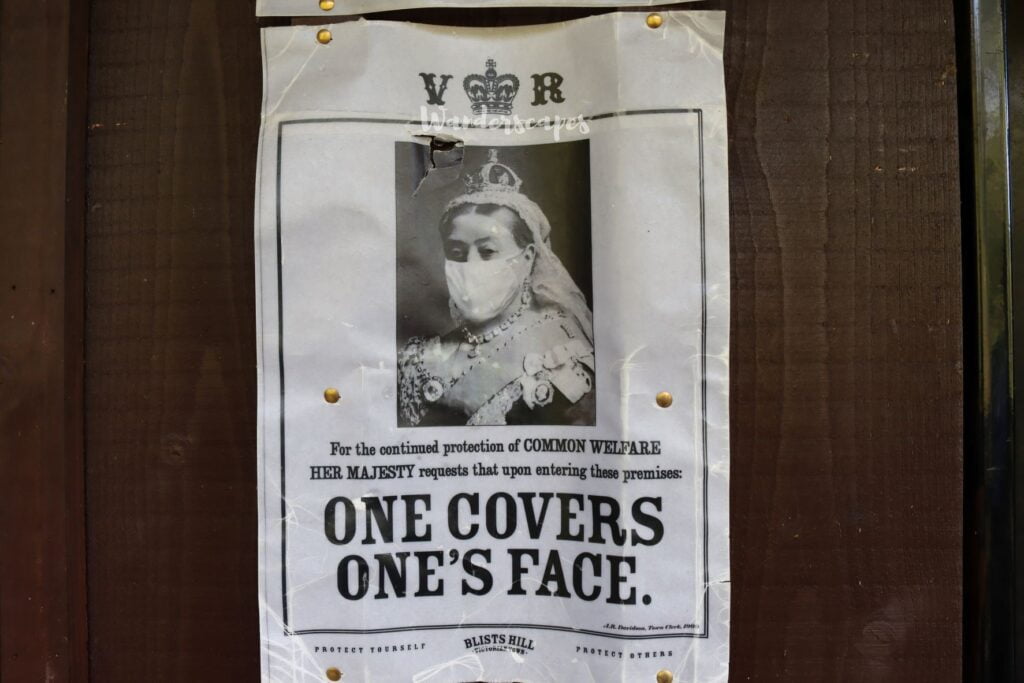
Blists Hill Grocery Shop – Stepping into Past
Our next stop was a grocery shop. It reminded us of the convenience store back home in Kerala during our childhood days. All the items were stored in tins, glass bottles, or China jars. It was interesting to see several packets with familiar names such as sunlight and other such brands prominently on the display. Most of the items came in paper packaging – whether it is washing soap, tea dust or other such items. There were scales to measure the items on sale.
What caught our attention was a special contraption used for specific measuring. It was rather simple – the shop keeper will place the paper cover in which the item will be wrapped in the measuring unit and fill it to the top. Once it is full, they remove the cover from the mould and lo, you get the exact measurement you needed. There is no need to balance the scale or re-wrap it after measuring. Everything is done in one go. The ingenuity of people was evident in all the little shortcuts like this and other interesting displays they had in these shops.
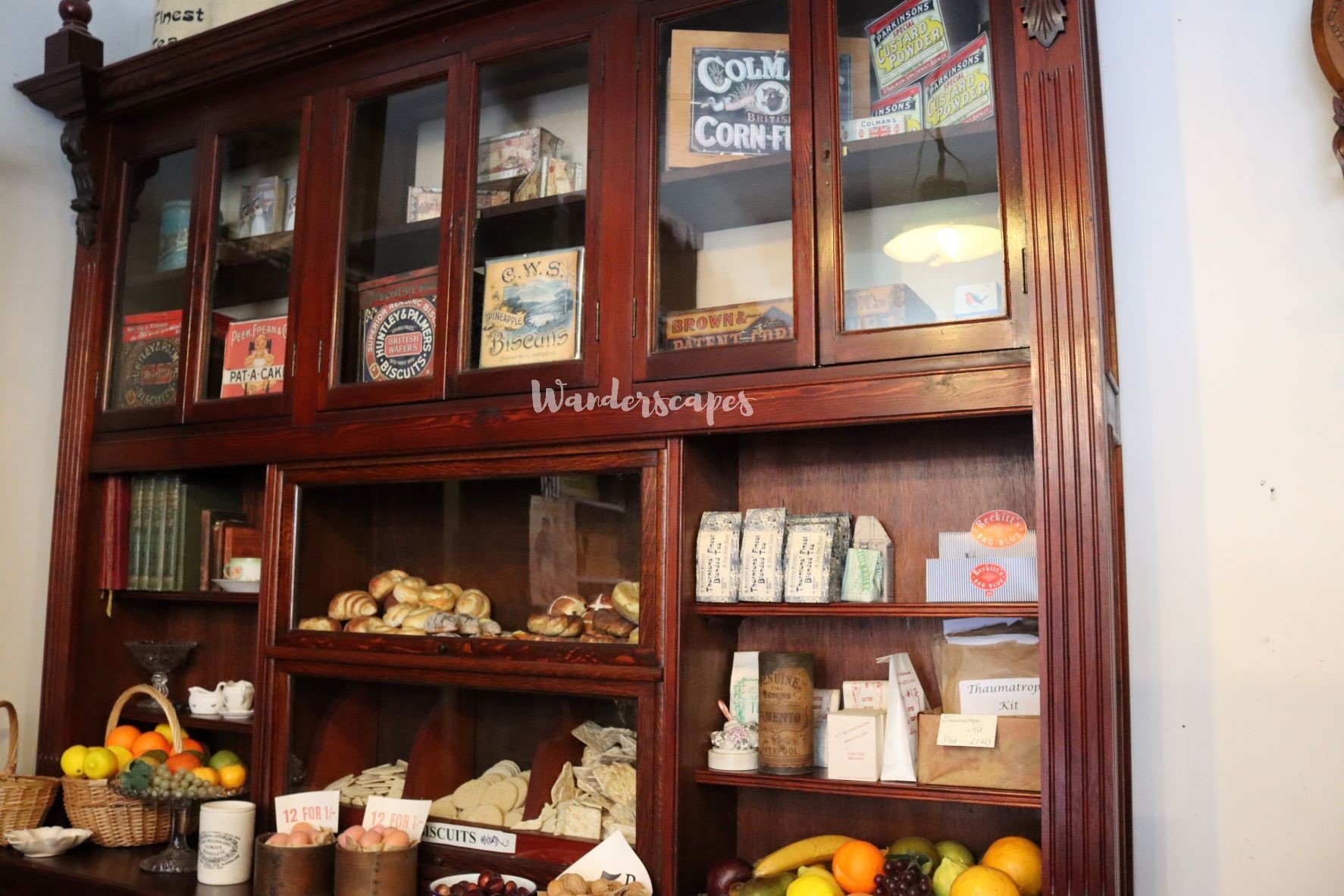
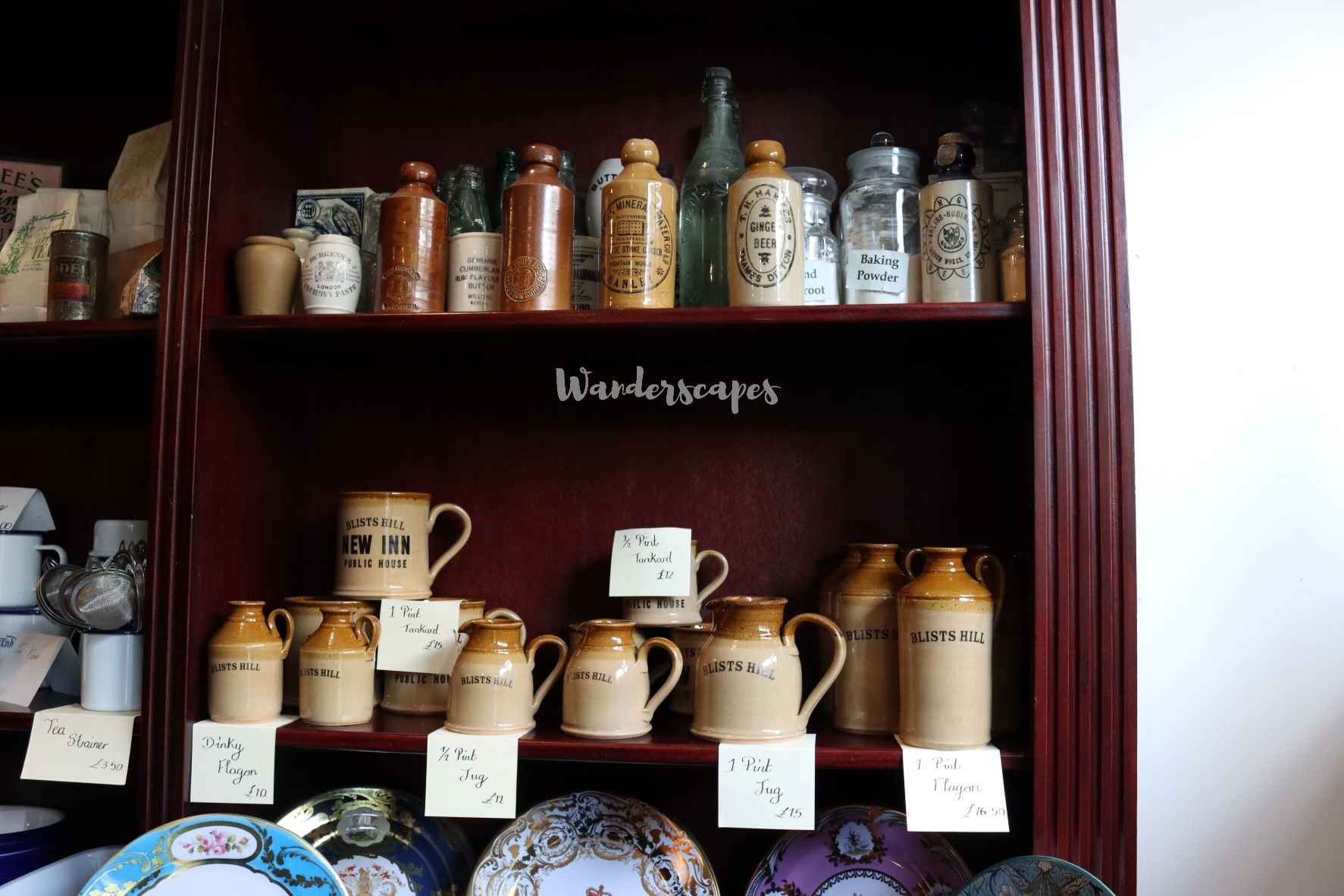
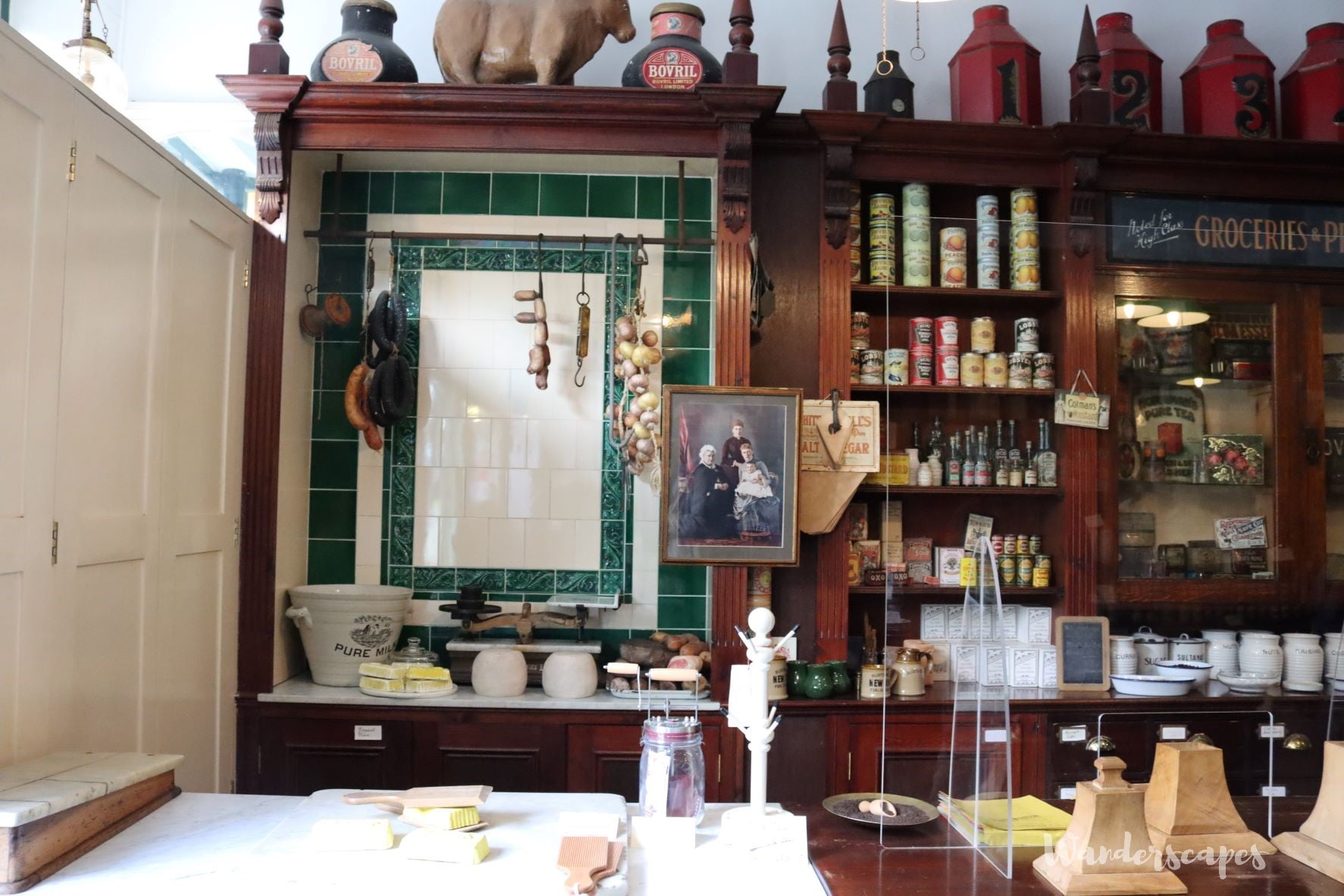
We did feel as if we were in a shop from the early 1900s. The shopkeepers were dressed in the period clothes and this gave a realistic feeling of the era. Tourists like us enjoyed every bit of it.
Chemist – Poorman’s Doctor
Next, we visited a chemist shop. The person inside the shop told us that in those days chemists were poor man’s doctor. Just as ordinary people couldn’t afford to open a bank account, ordinary people could not afford to pay a doctor for his services. So, most people went to the chemist for cures for common ailments. The services of chemists were free, although they charged for medicines. The chemist consulted his prescription book to mix up conclusions. potions and powders to treat common illnesses.
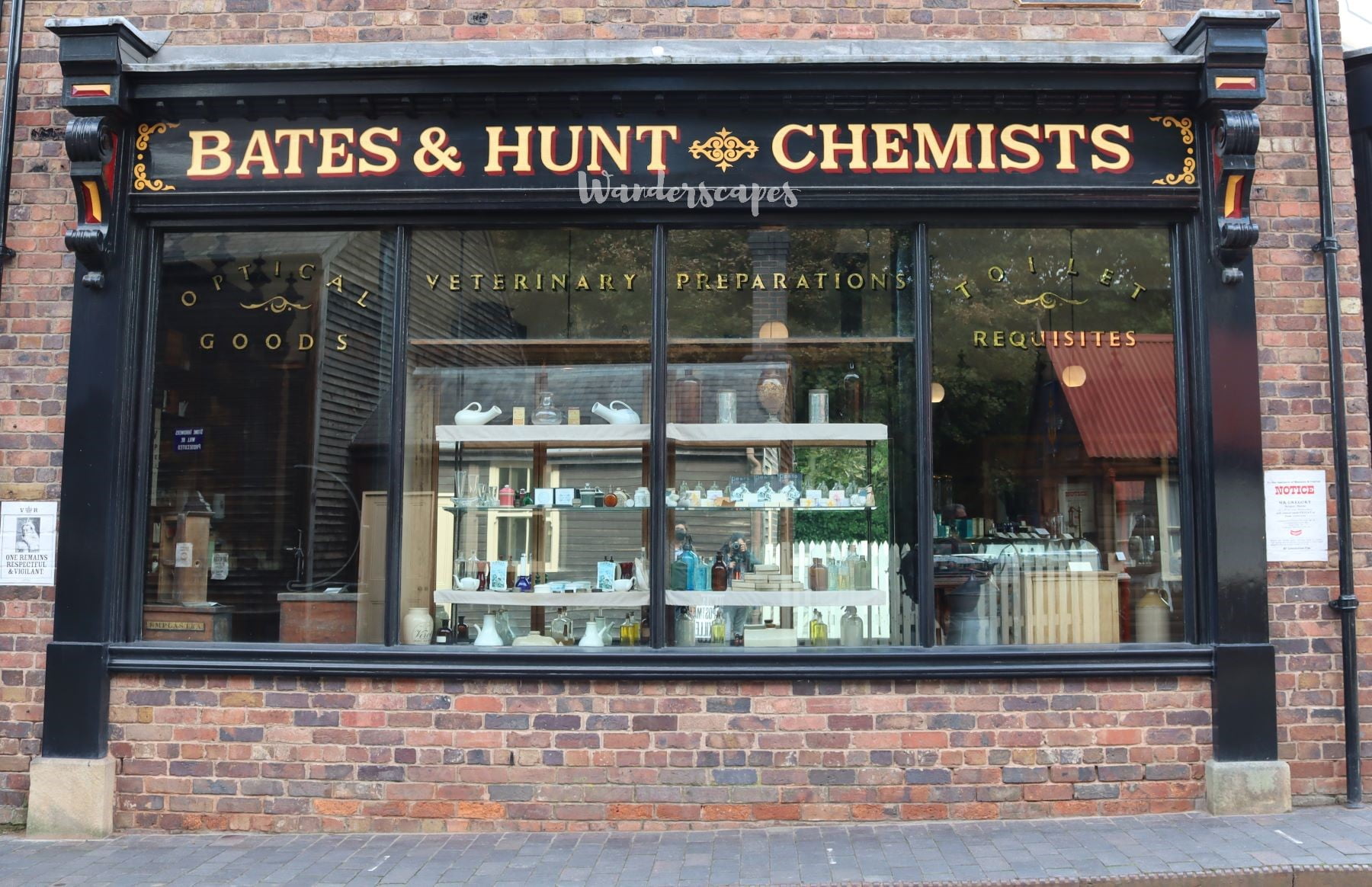
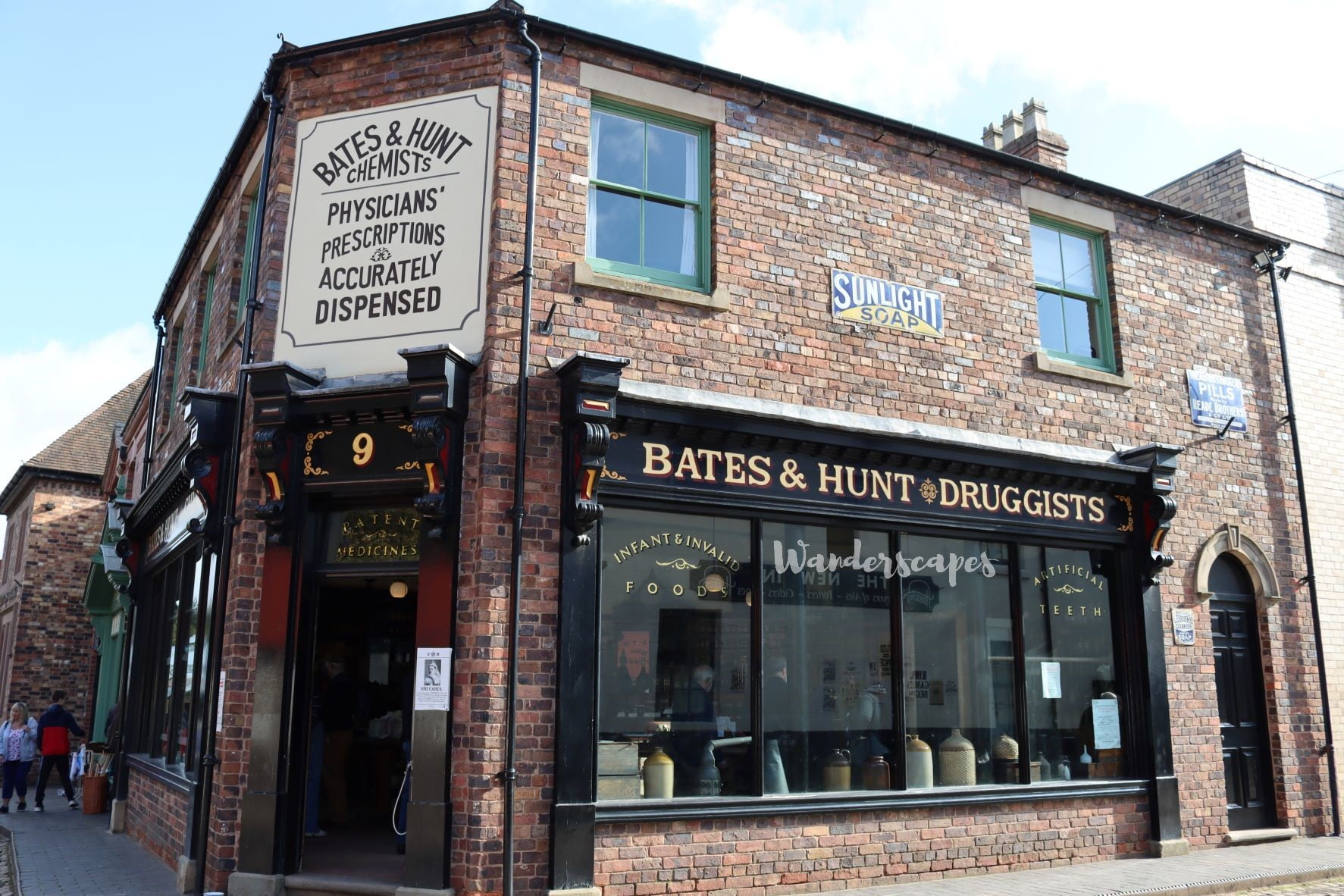
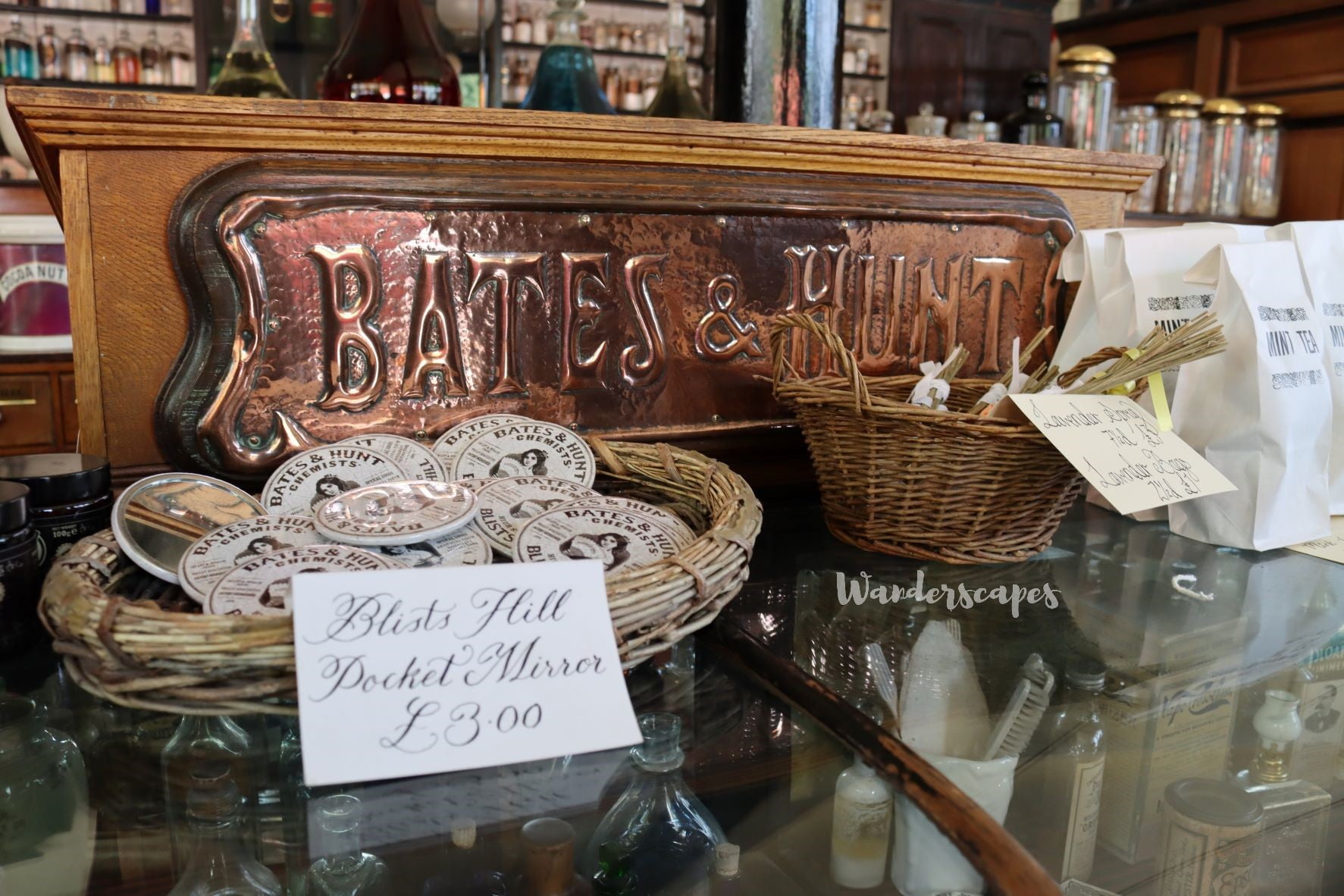
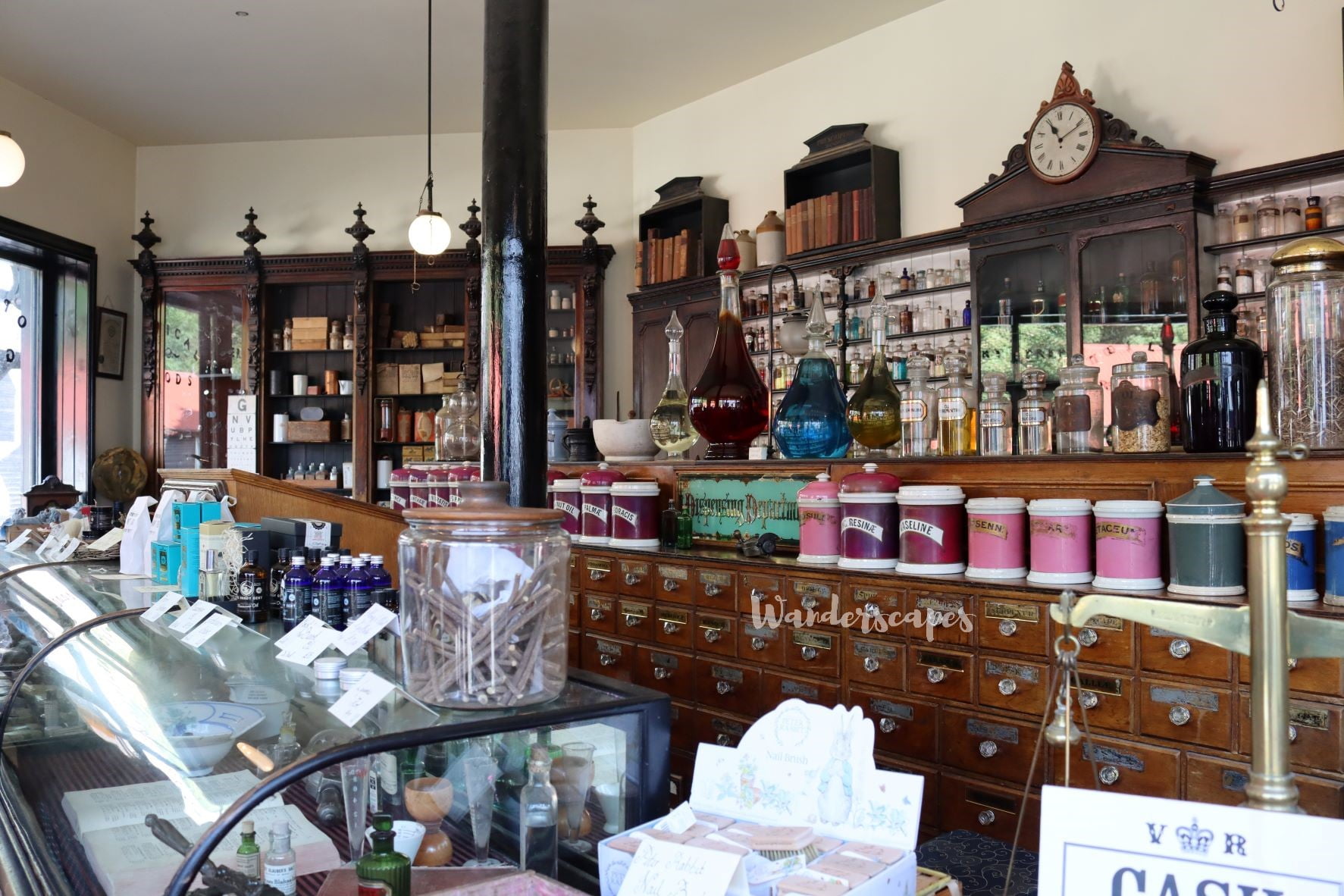
In a corner at the chemists, there is a small room for the dentist. Dentist is a specialist who visited the town once in a week or once every two weeks. So people with tooth problems could consult the dentist at the chemist shop. Likewise, there is there is a space for the ophthalmologist too. So, if you had any problem eye troubles, you could check them at the ophthalmologist on the day of his visit.
A Place for Everything and Everything in its Place
Everything in the chemist’s was arranged well. It reminded us of the rule ‘there is a place for everything and everything in its place’. On a shelf at the far end we could see several bottles of liquid arranged neatly on one side, while on the other side of the shelf there were various medicinal powders. Between the two, under lock and key, they stored poisonous or toxic substances. The chemist consulted his prescription book to mix medicinal concoctions in the right amount to cure illness.
A Walk Along the Blists Hill Town
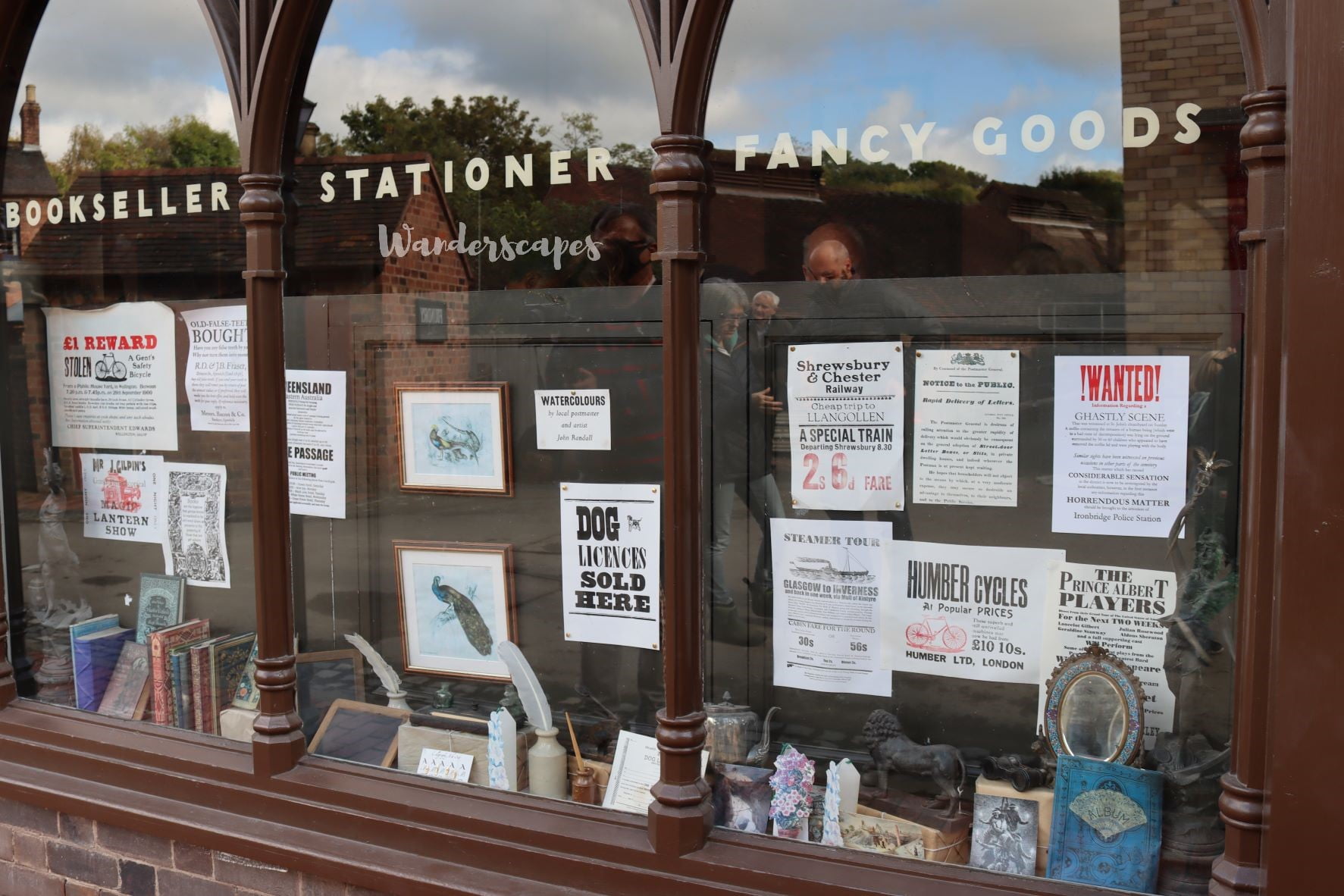
After seeing the chemist shop. we walked along the street and saw an inn, a pub, a dressmaker’s shop which with sold hats and dresses of the time. Soon, we reached the post office and decided to look inside. It was a small post office and hence we found it very crowded as several people lined up to buy postcards and dog licences which were available there. The post office also had a morse code machine that demonstrated the working of a Telegraph machine. However, during our visit, that was not on display.
The first floor of the post office houses a small museum dedicated to the postal services. Although small it size, it is a treasure trove of information and offers you a lot of value. So, if you ever visit Blists Hill don’t forget to visit the tiny museum on the top floor of the post office building, especially if you are interested in the history of postal services and communication.
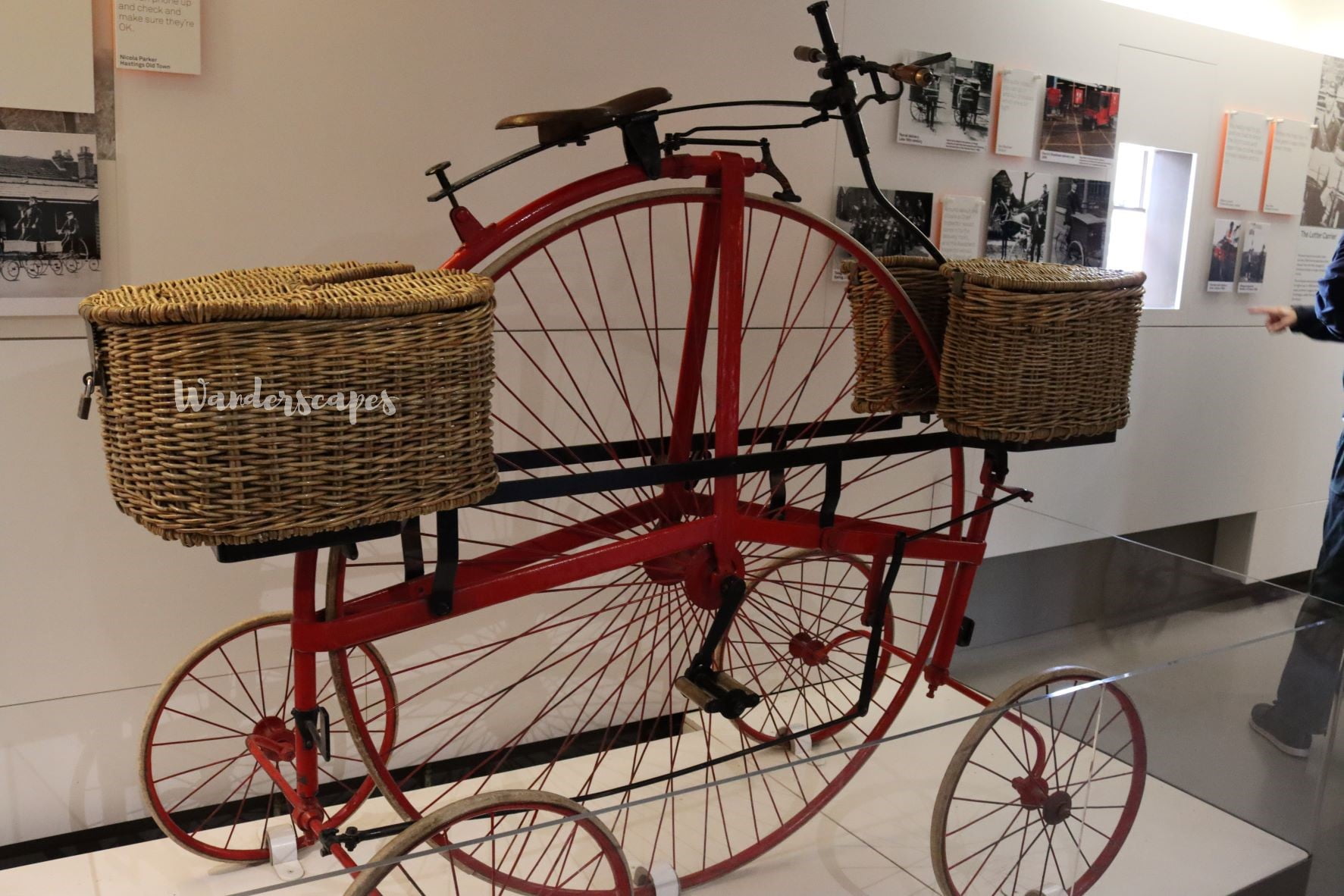
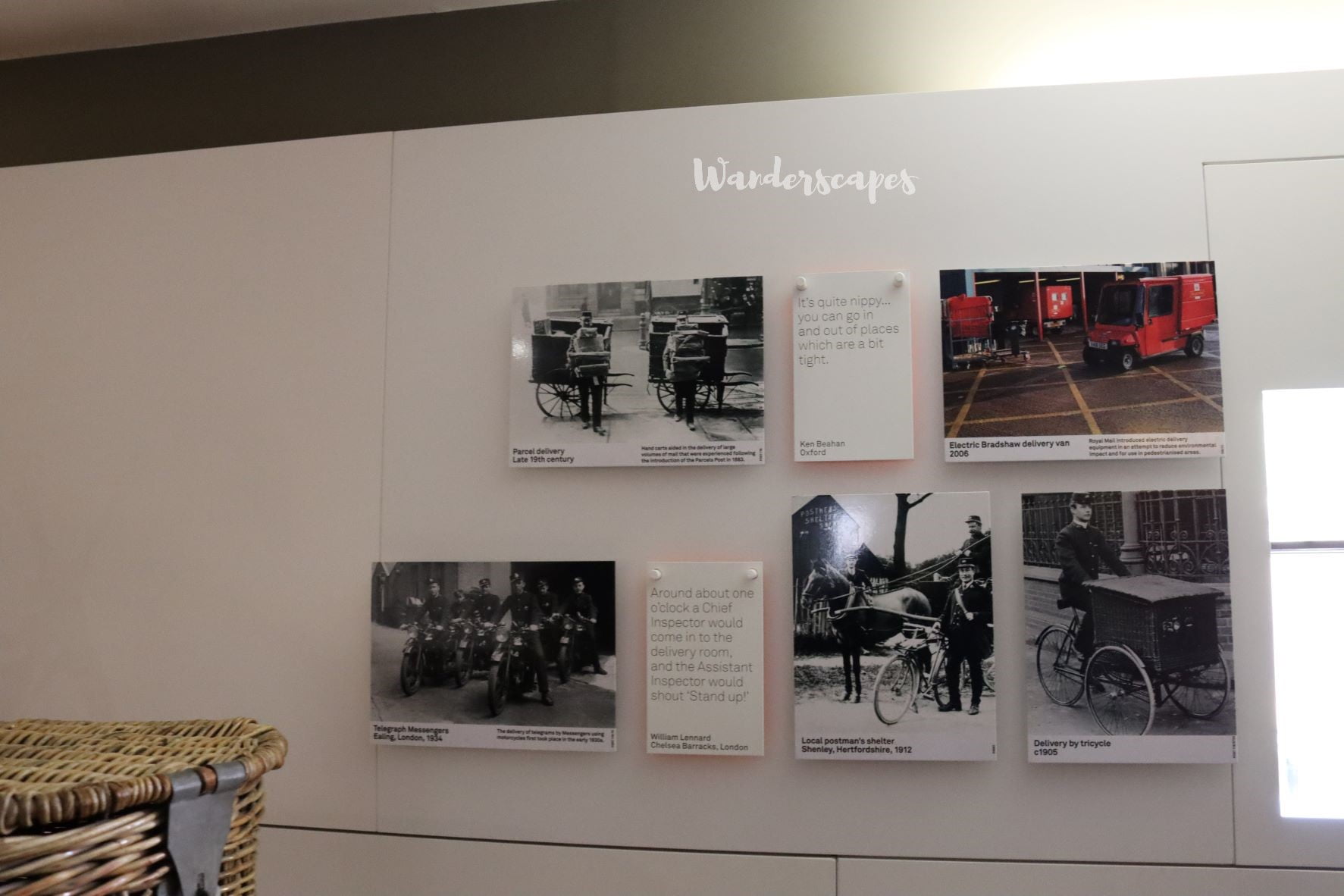
After seeing the post office and museum, we continued to explore the town further. We saw several shops on our way. We tried to click our photo at the local photo studio but there was a long queue. Since we didn’t wish to spend so much time waiting, we decided not to get the photos clicked.
Confectionary and Other Blists Hill Attractions
So, we went into the confectionary shop and bought a few sweets. When we asked the shopkeeper which was the popular flavour in those days, she told us that she can’t suggest a particular sweet because it all depended on individual choices. However, she suggested some options to us and we bought a few ounces of 2-3 varieties of sweets and a bar of chocolate.
A elderly man was sat at the corner making door mats from waste clothes. It was fascinating to watch him tie small pieces of clothes into knots and create a door mat just like that. Sometimes, even observing a work of art can be therapeutic. This felt like such an occasion.
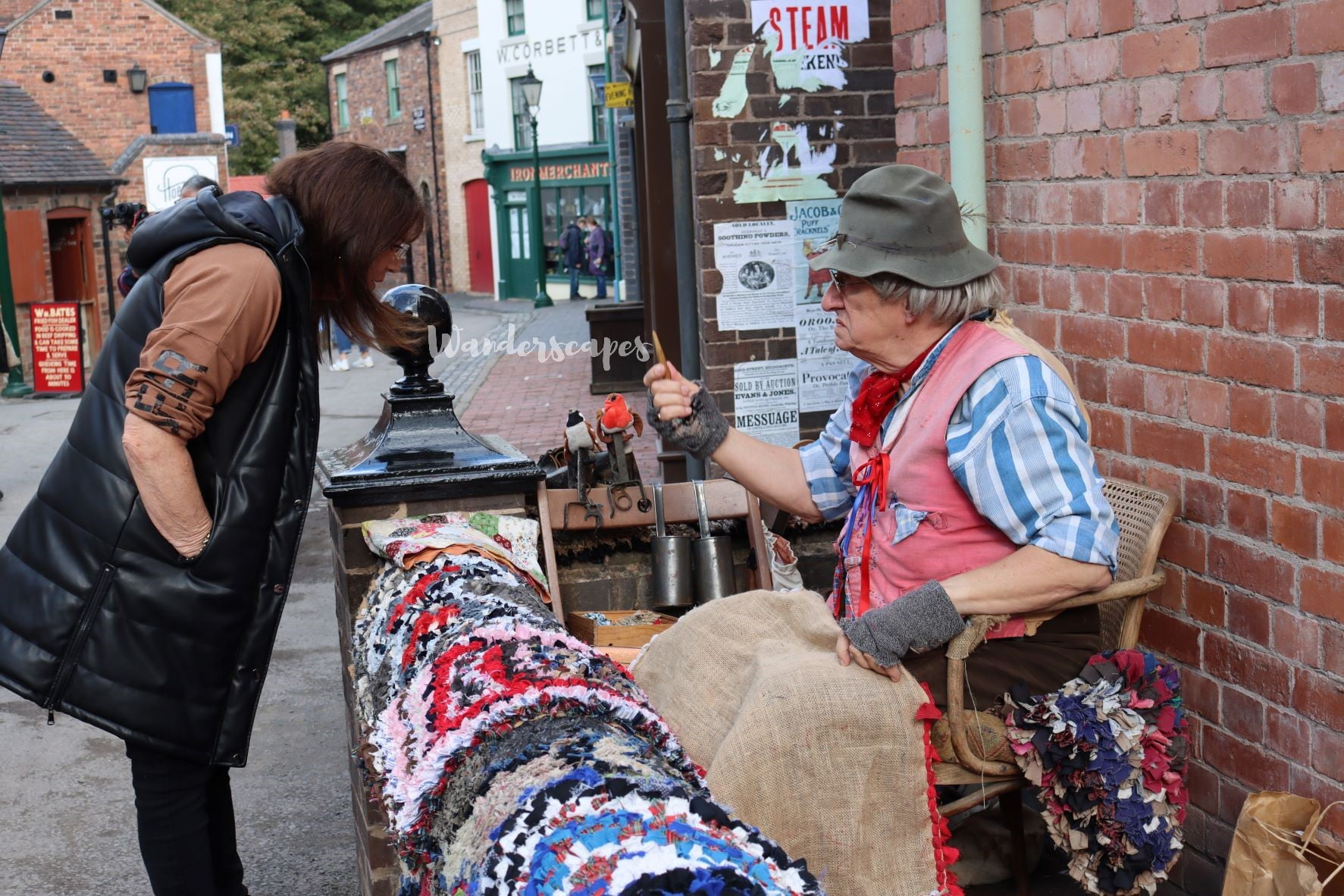
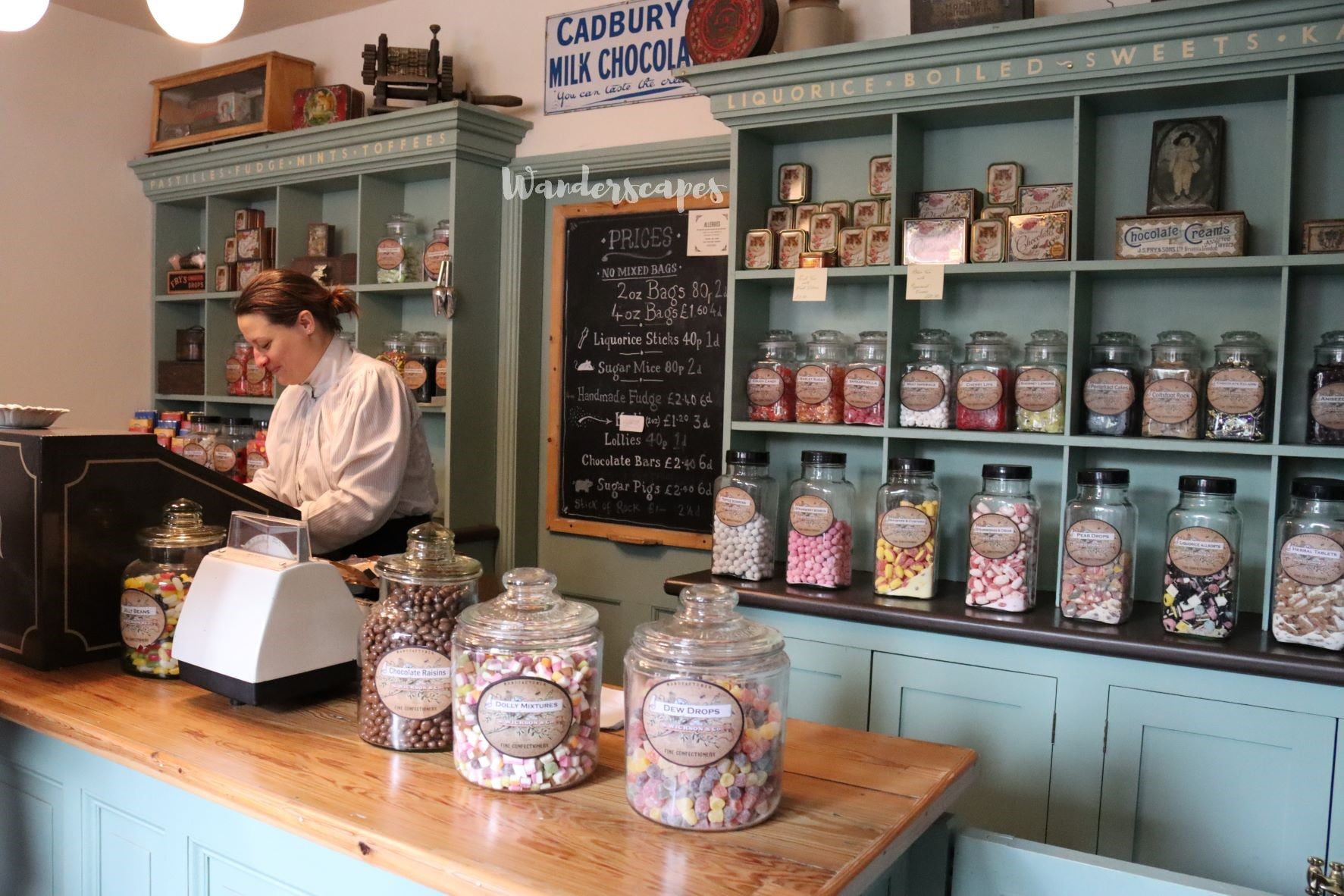
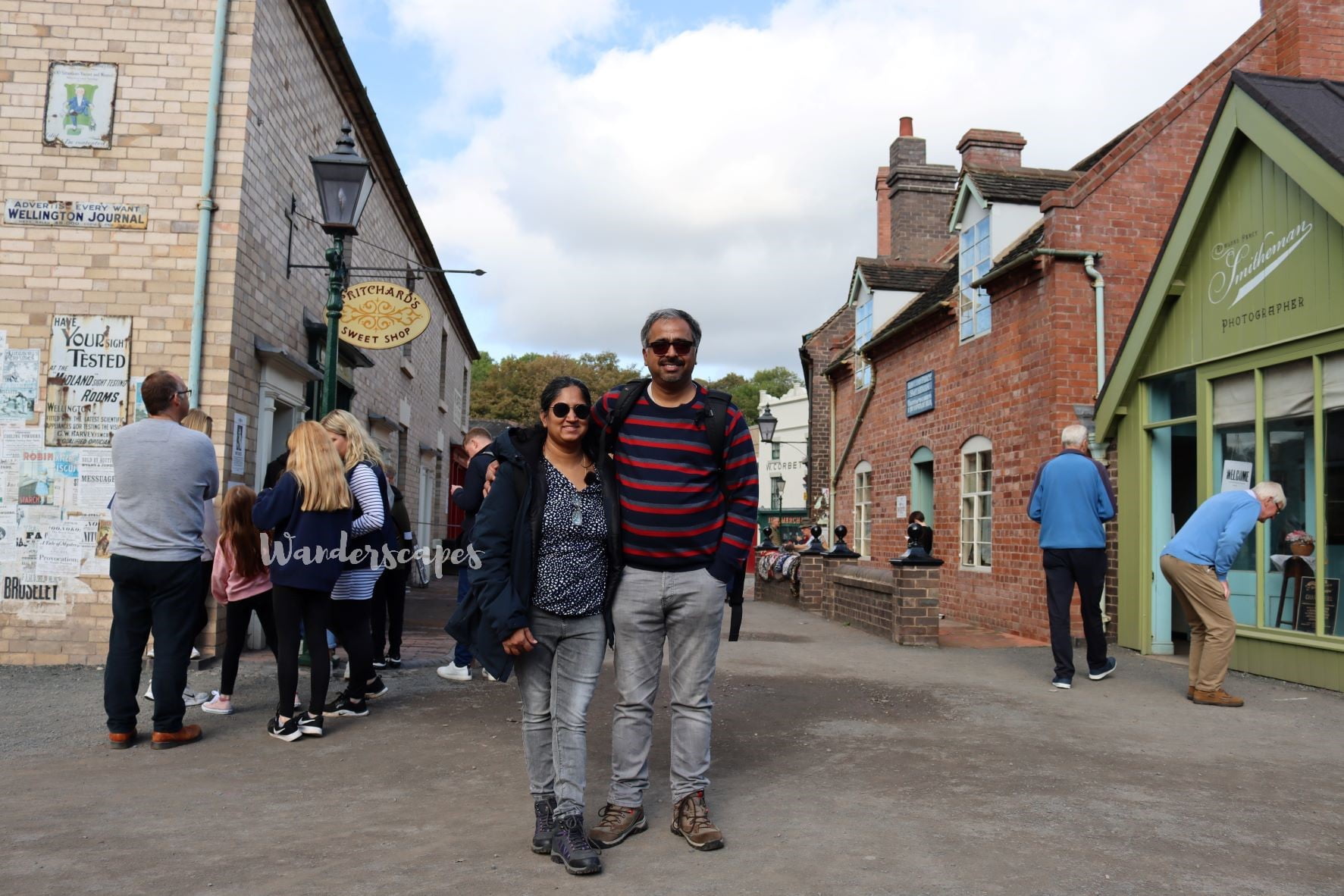
Other attractions included a range of locomotives and engines. All these were invented and made in Coalbrookedale. It was fascinating to see some of the first generation engines and locomotives.
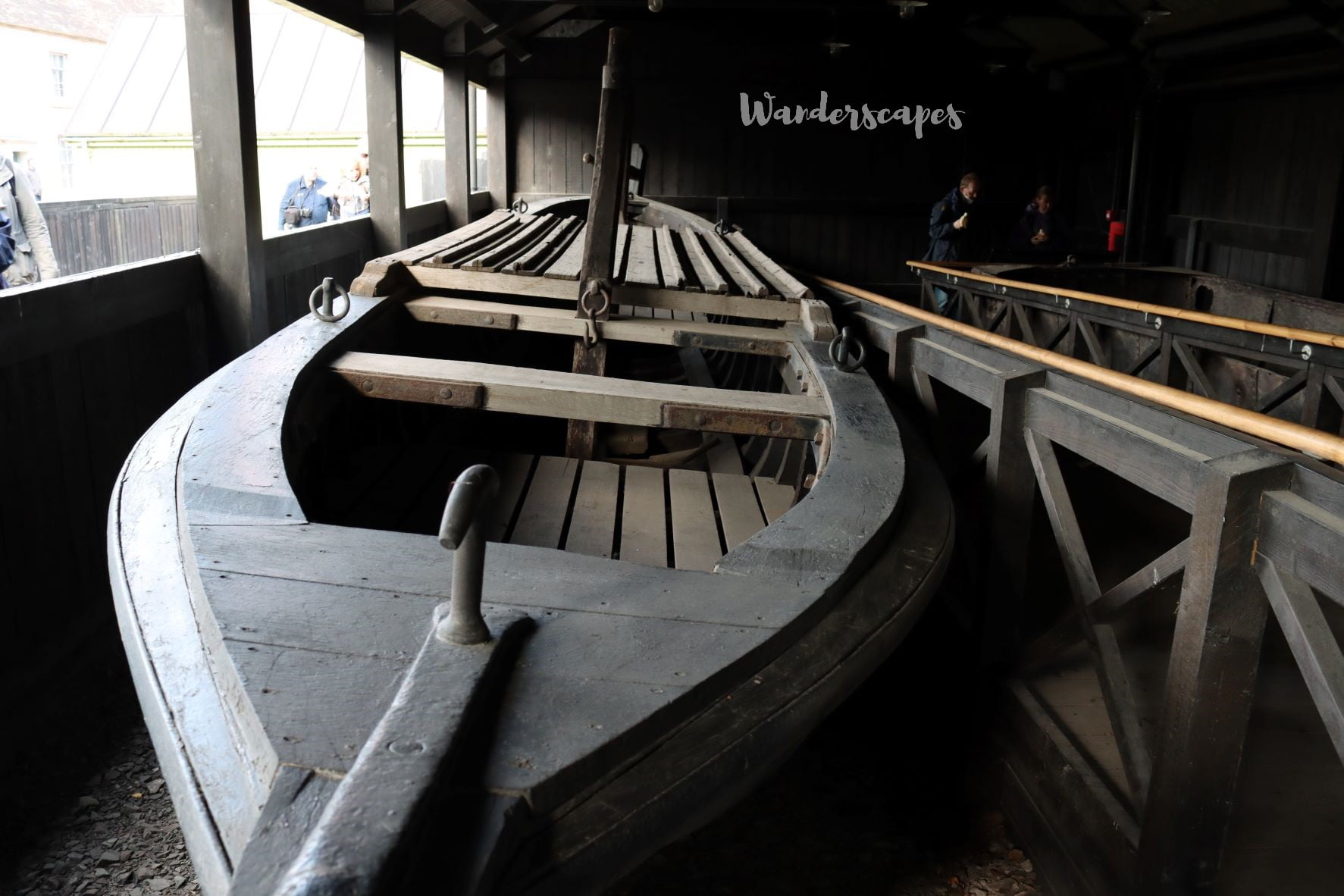
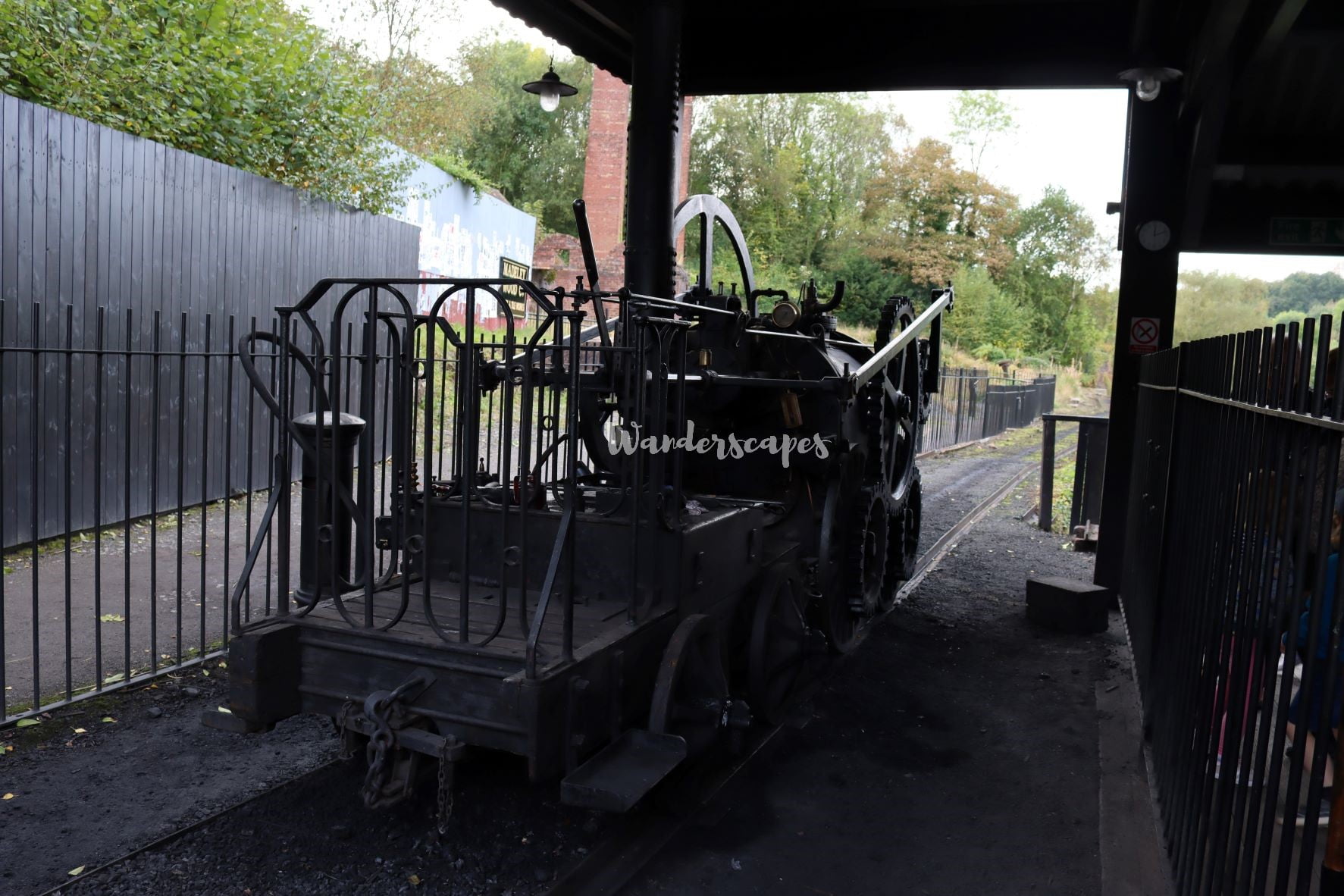
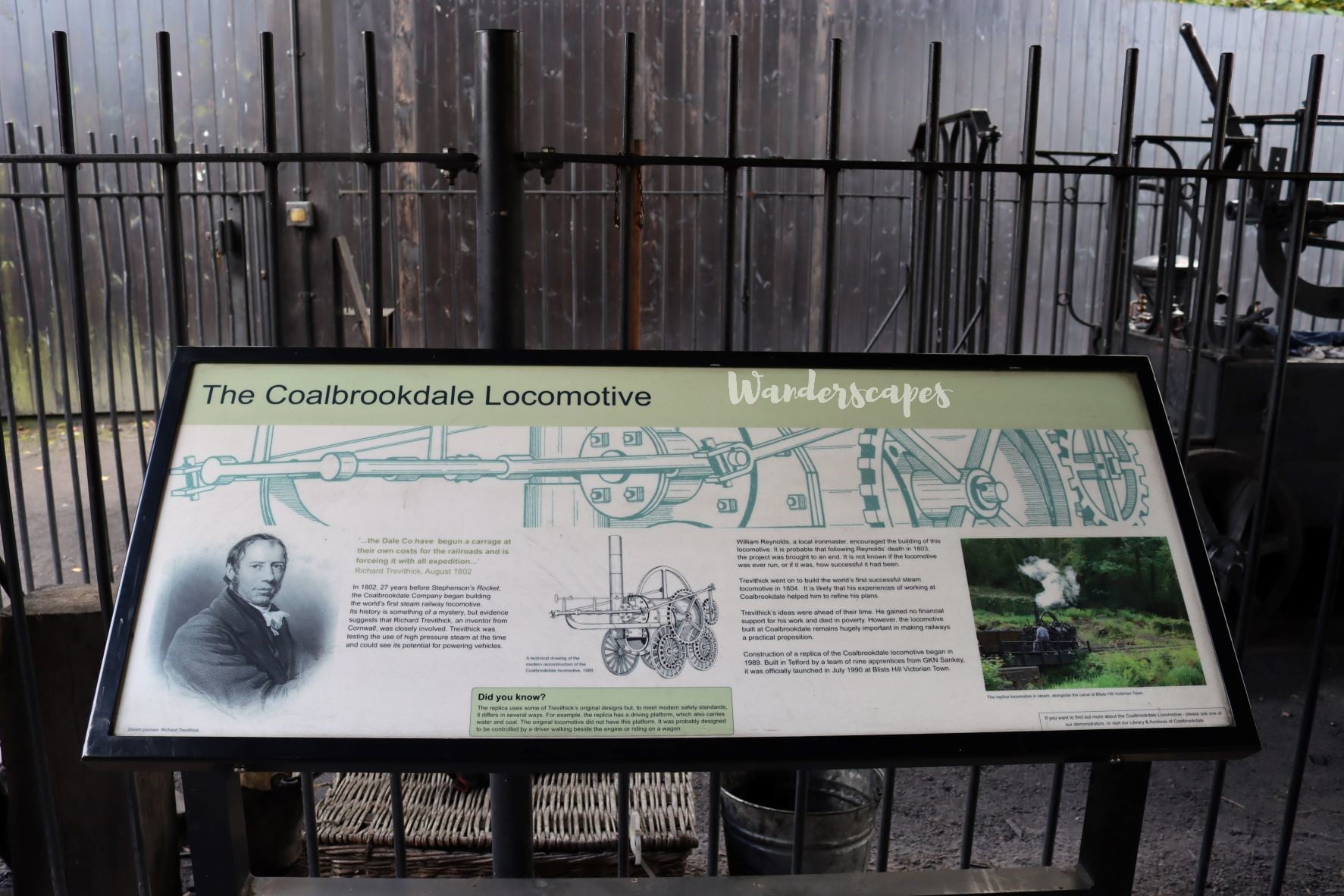
Blists Hill – Much More than a Small Town
The Blists Hill Victorian Town is divided into three main sections – the first section consists of town life featuring shops, commercial establishments and other businesses. The second section showcases the industrial heritage and history of the area. Third section is dedicated to nature.
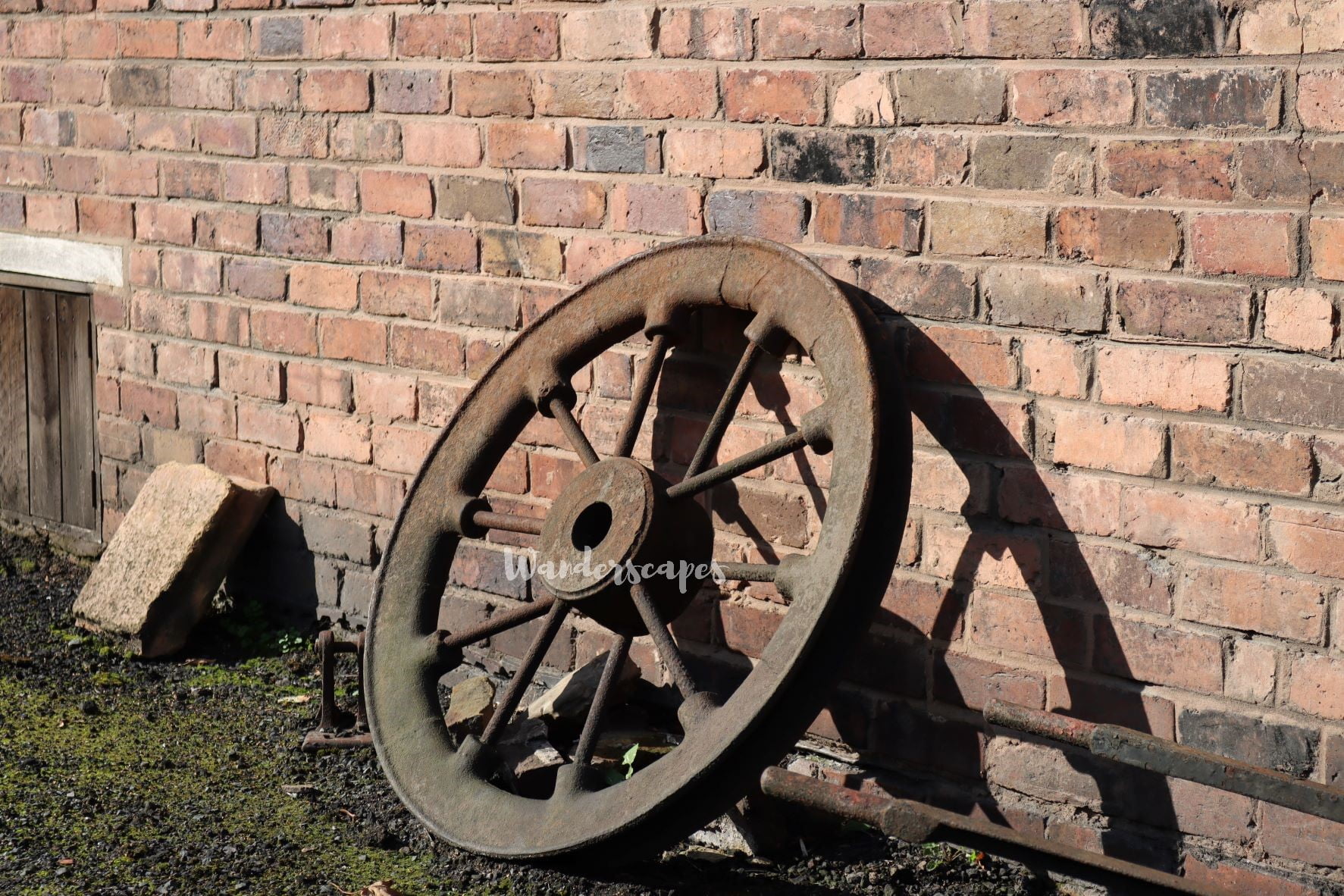
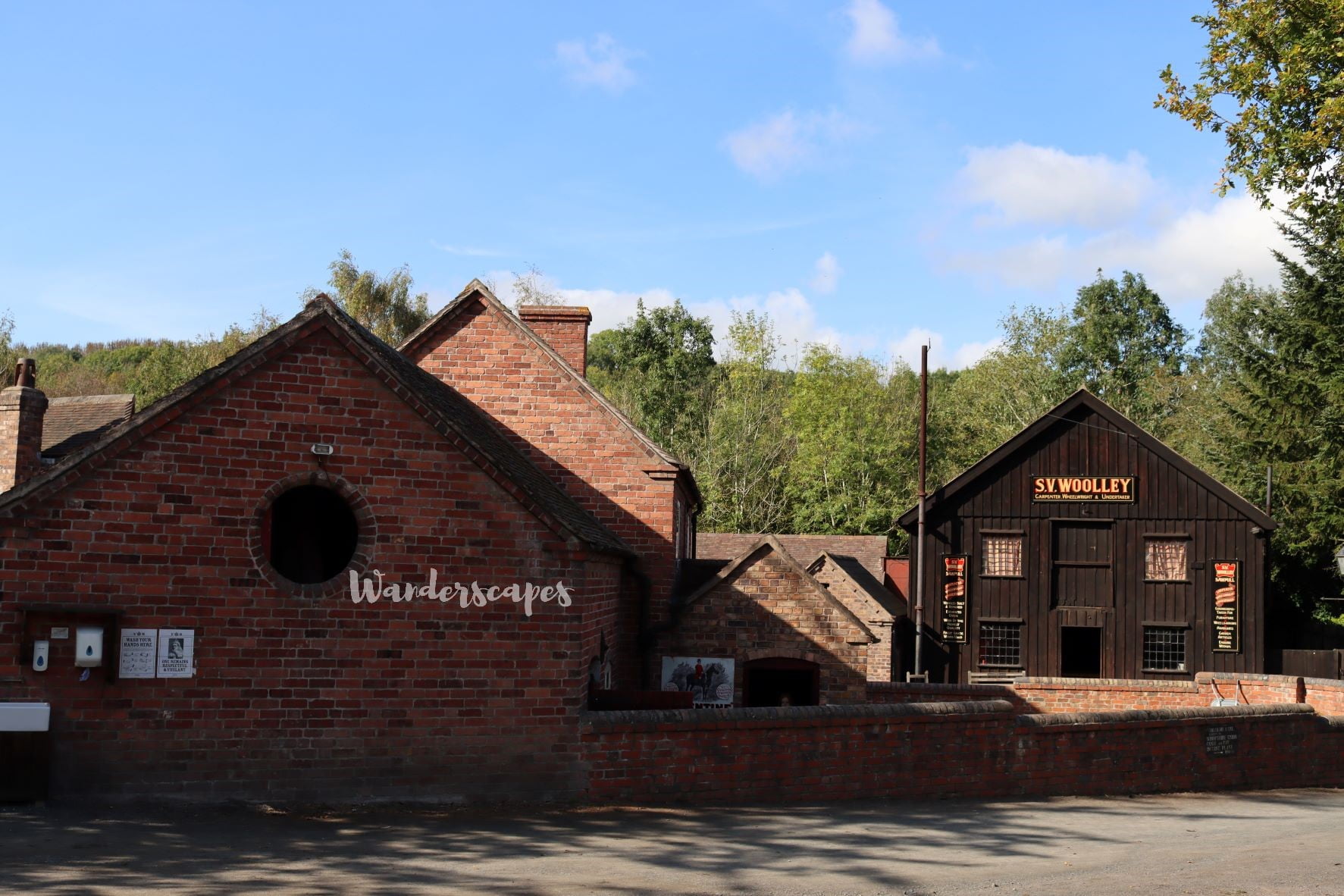
We visited several shops, peeked inside the handicraft shops, pottery and other small scale industries before walking along the canal pathway towards the Hay Inclined Plane.
Hay Inclined Plane – An Engineering Masterpiece in Blists Hill
The hay incline plane is a must see attraction in Blists Hill not only because of its ingenuity but also for its sheer beauty. Even at the first glance, the rails running from the top of hill towards the bottom is a beautiful sight. The hay incline plane was used to transport goods from the top of the hill to the River Severn at the bottom. The finished goods were transported through the canal at the top of the hill and transferred to a tub/bogey which then travels through the rail to the bottom of the incline. From there, it is again transferred from the tub to the vessels waiting in the river to be transported to various parts of the country.
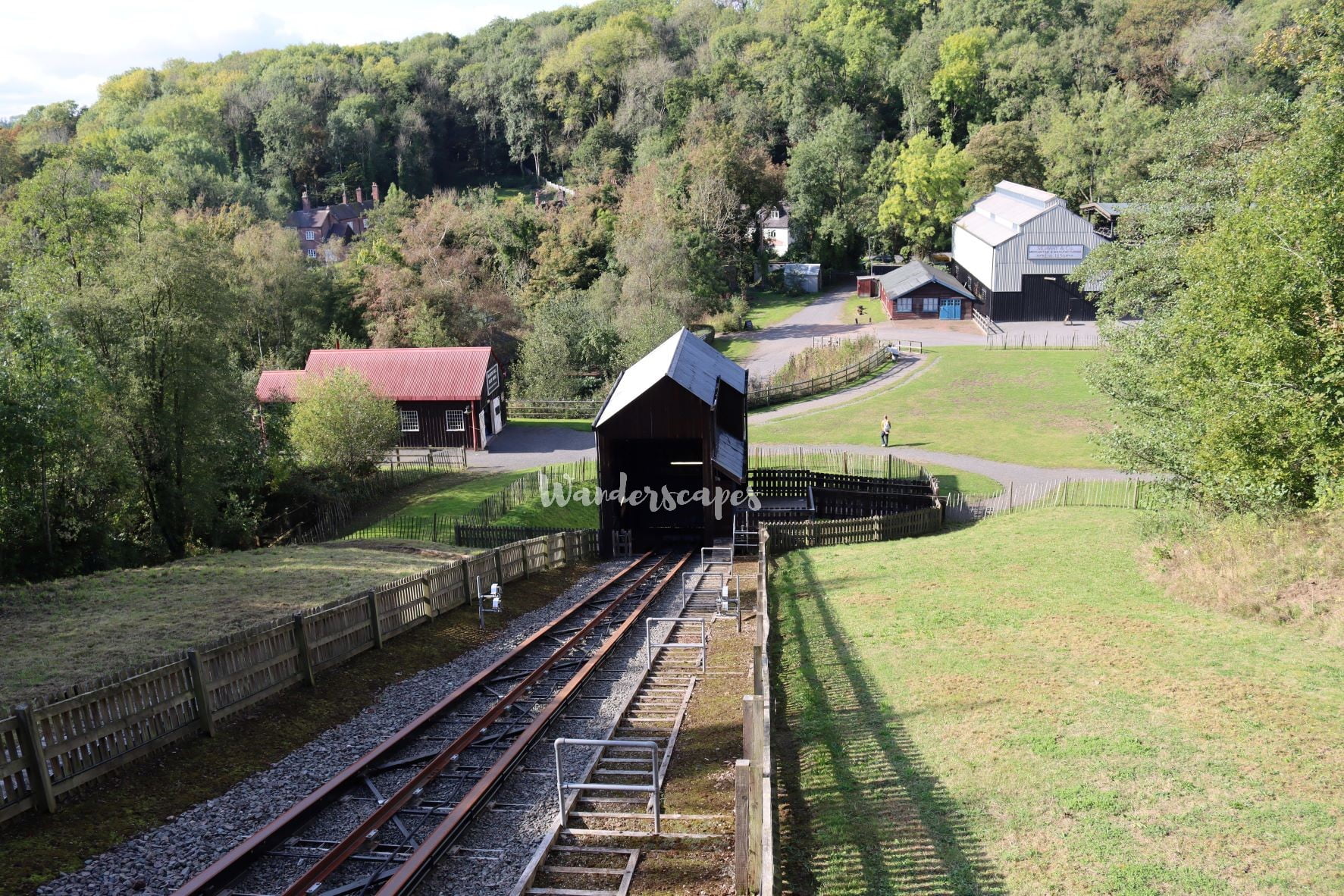
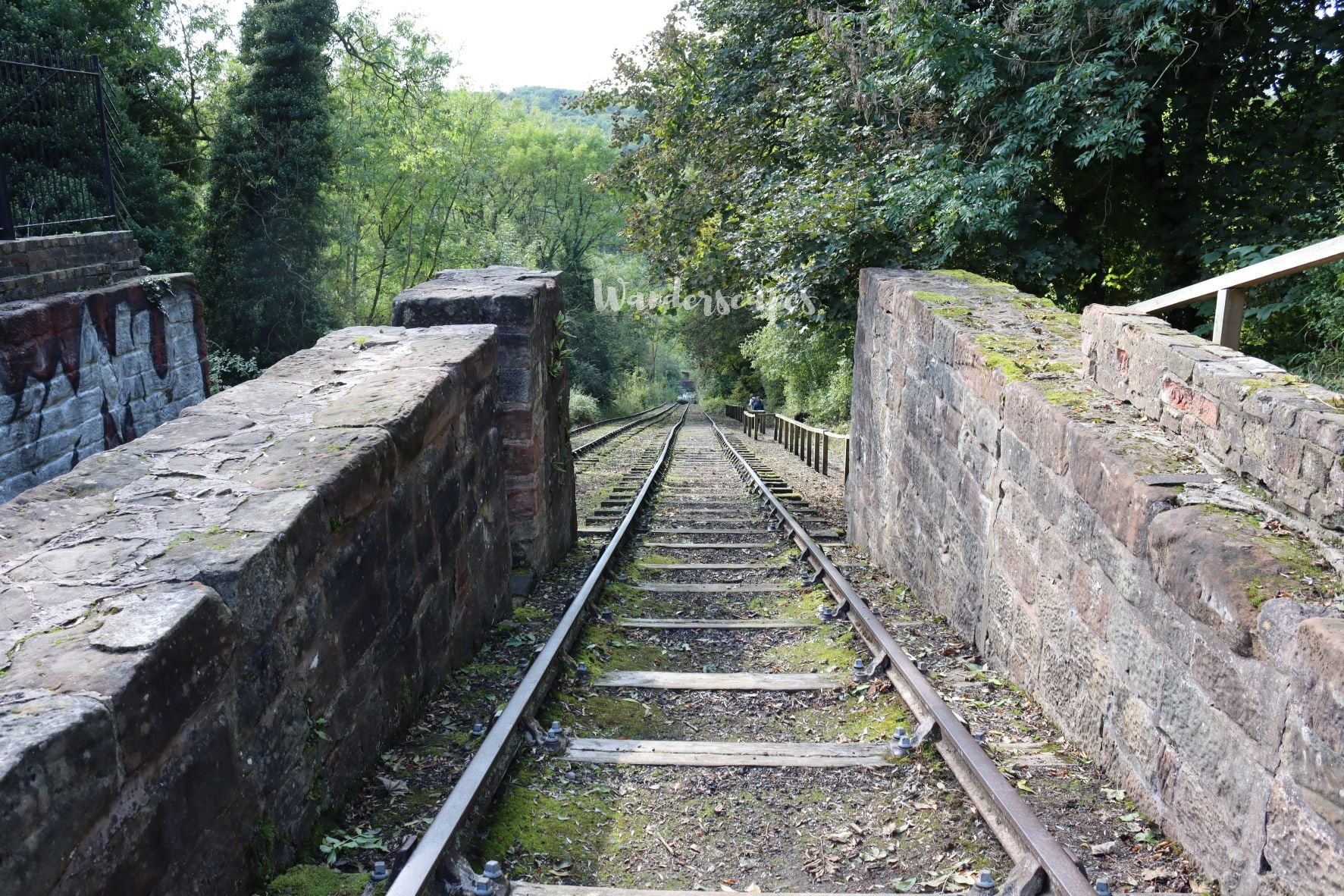
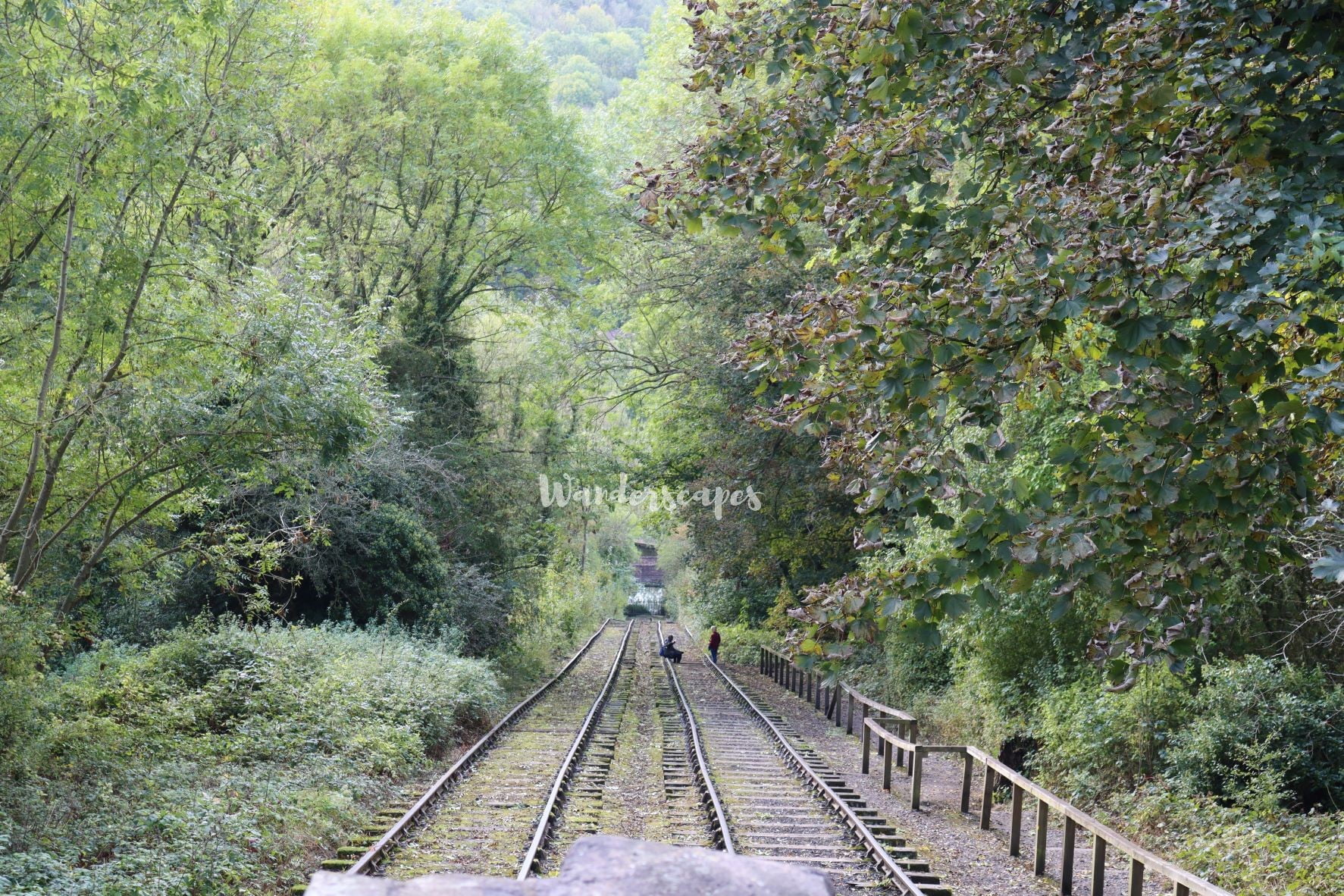
It worked on the principles of pulley – when the goods travel from the top of the incline towards the bottom, the empty tubs come up simultaneously through the other rail to the top of the incline. It was an easy method to transport goods without having to navigate miles if they were taken to the river by road.
The incline was the winning design of a competition held during the 1793. There are five more such hey inclines in the entire Shropshire area. We can admire the ingenuity of human mind, the beauty of the nature and then walk down the rail towards the path leading us back to the Victorian town. A walk along the wooded area felt peaceful and the sounds of nature was relaxing. Soon, we came across a play area, where a large number of children were playing and having fun.
Miner’s Hut – Home of Blists Hill’s Miners
We then proceeded to see a miners hut. Most of the people that lived in this place during the Victorian era were minors. The miner’s hut here gives us an idea of what their homes were like. As we enter the hut, there is a small drawing room and a tiny pantry by its side. Then there is a bedroom – this was for the whole family. Often, the family had six to eight members who lived under the same roof in this tiny space. There wasn’t any running water, electricity or water closet. Life was tough for them. Adjoining the miners Hut was a chicken coop and a small vegetable patch. There was a primitive toilet on the premises and we also saw something that looked like a pigsty.
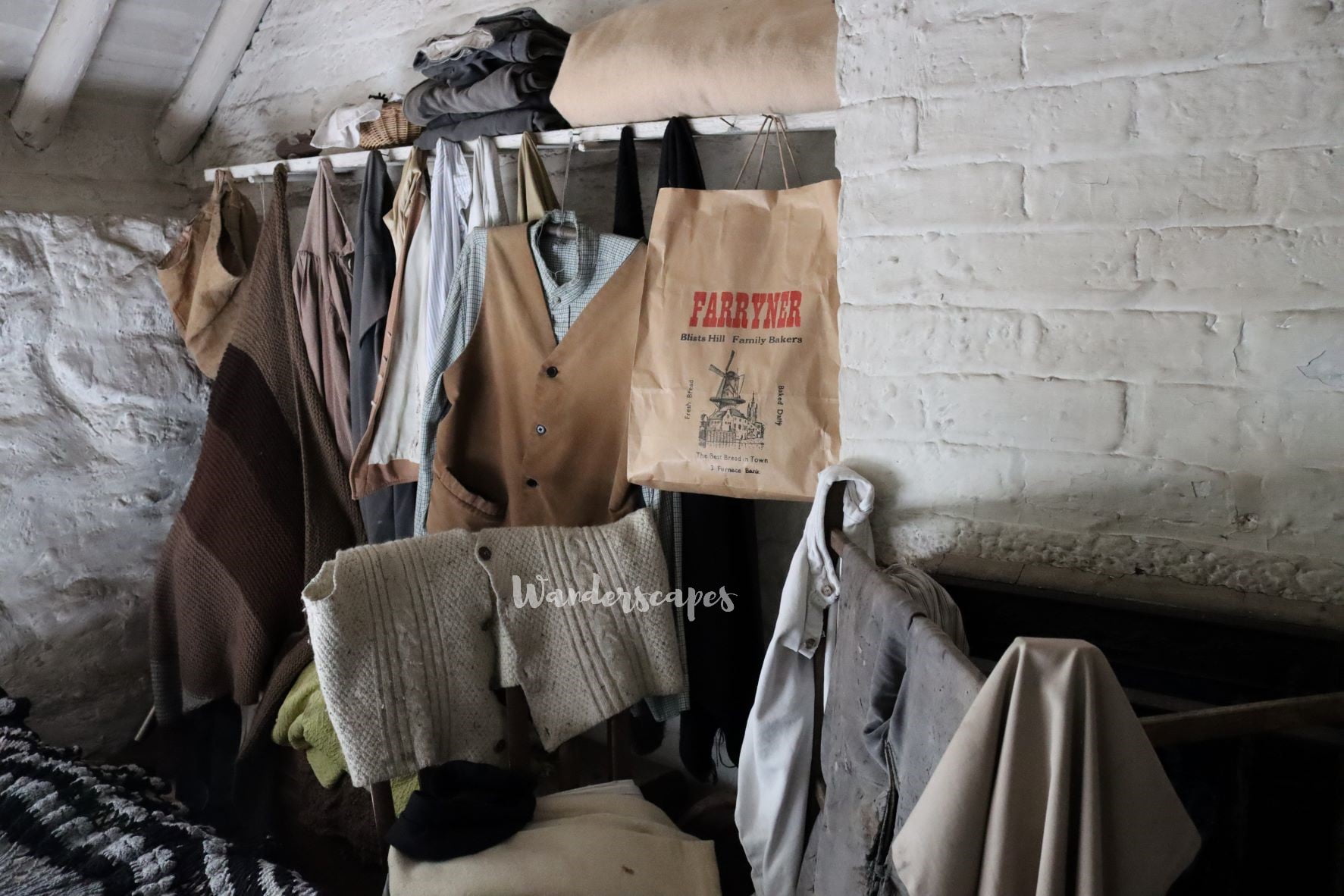
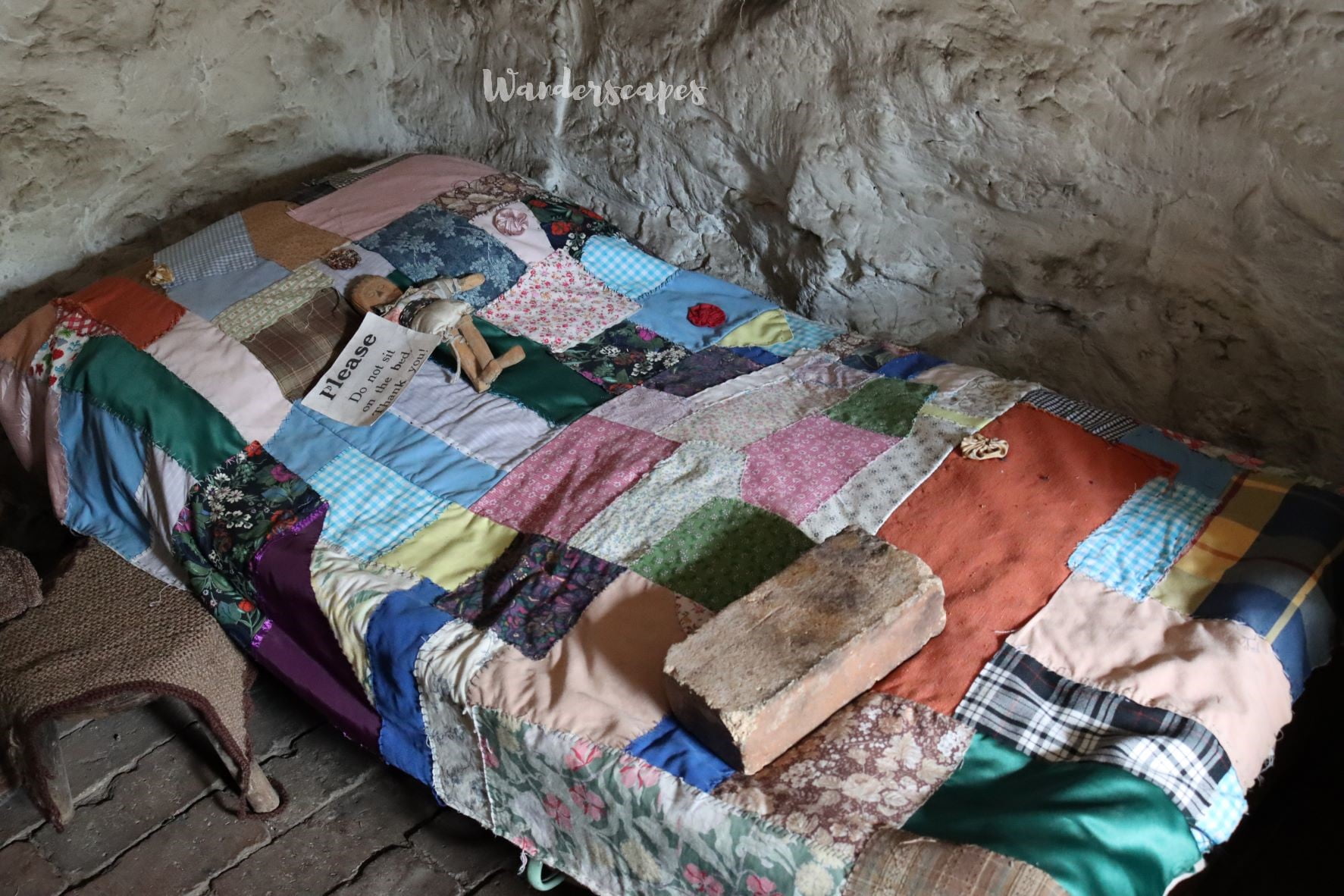
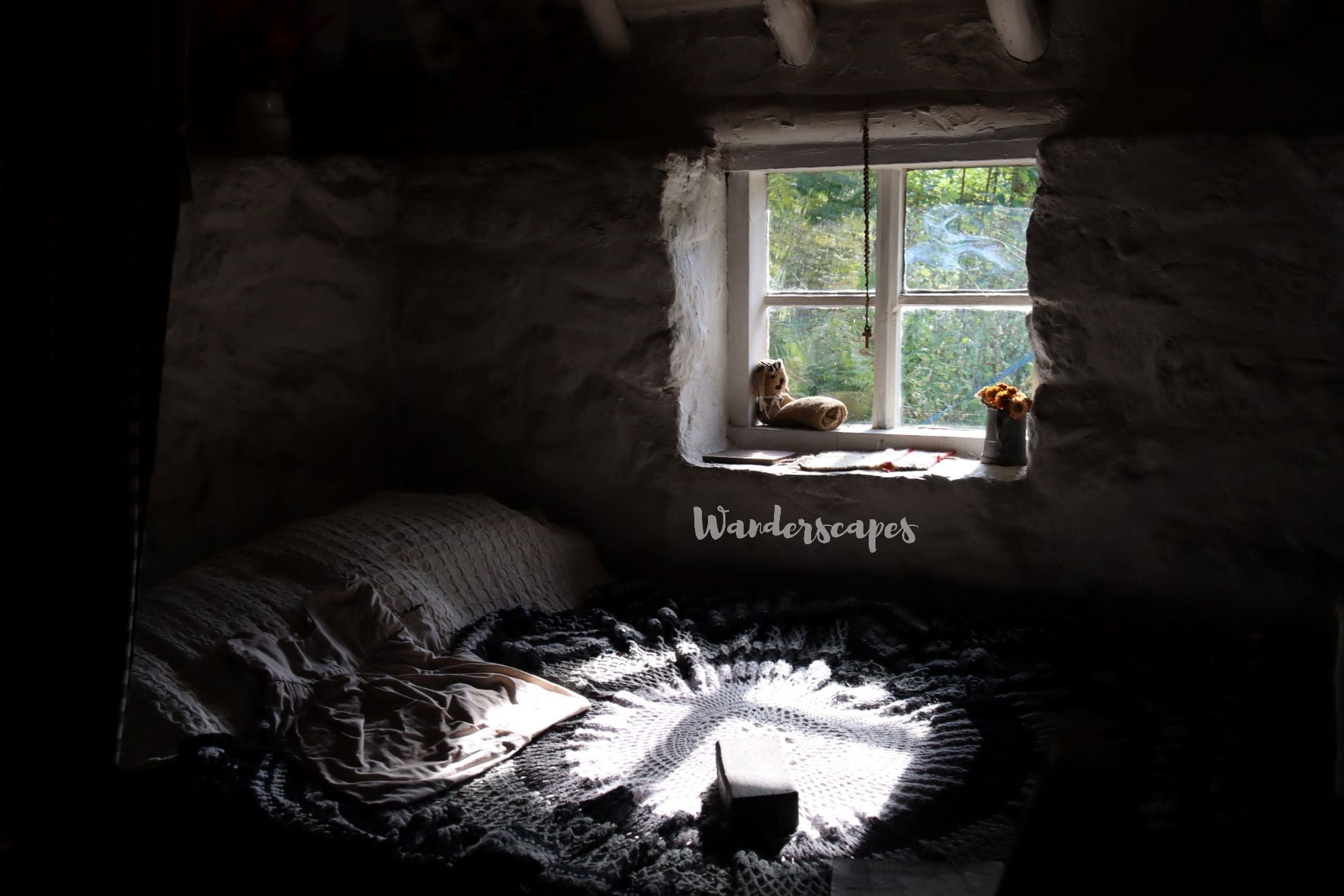
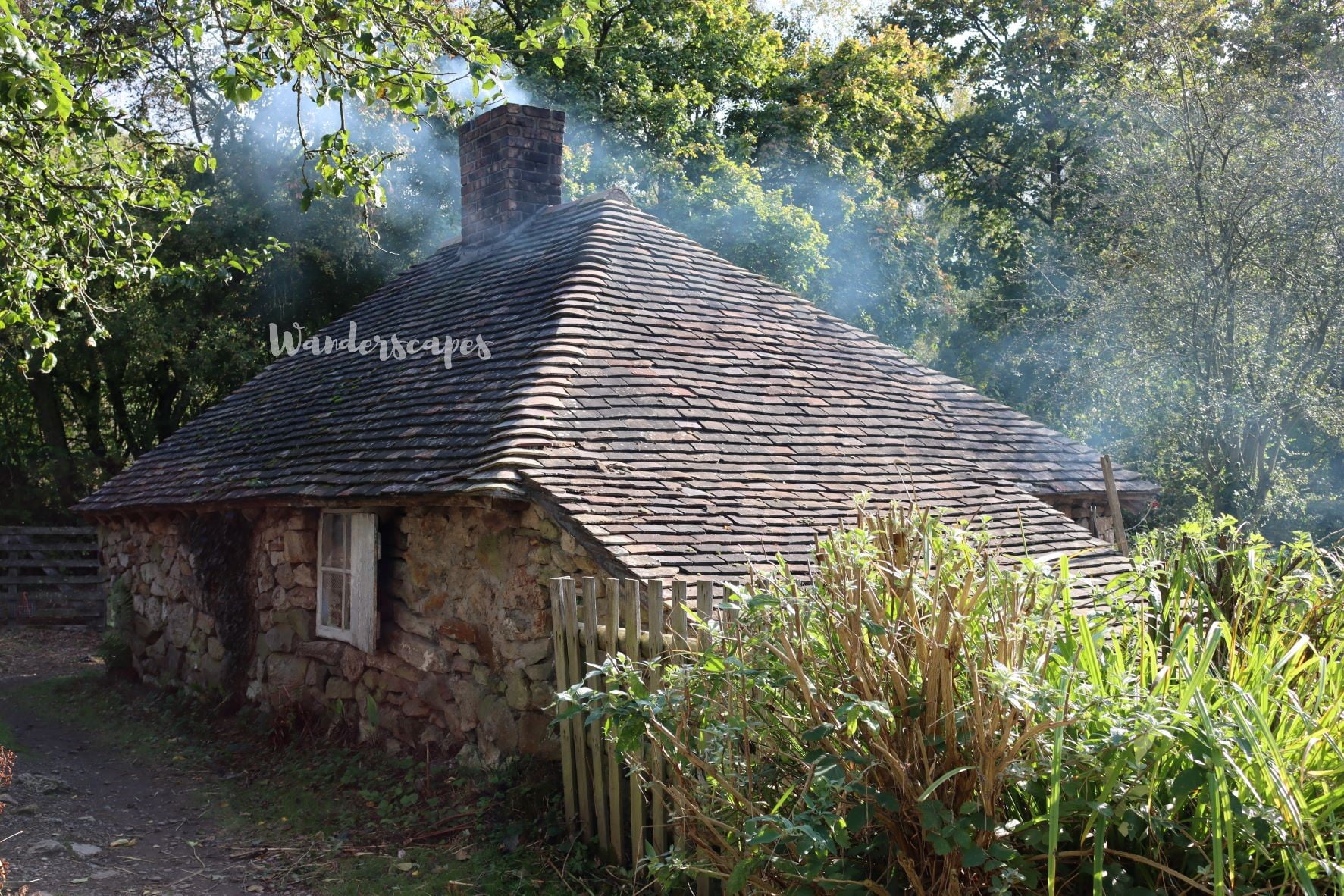
More Sights and Experiences
Some of the exhibitions were closed (due to the pandemic situation). A few are closed because the staff were having their break during the time of our visit. So we missed out on a few attractions like the local church, cottage, and so on. As we went around the place, we came across a fairground with merry go-around and other attractions for children. The entire place was filled with laughter and fun as children ran about and played.
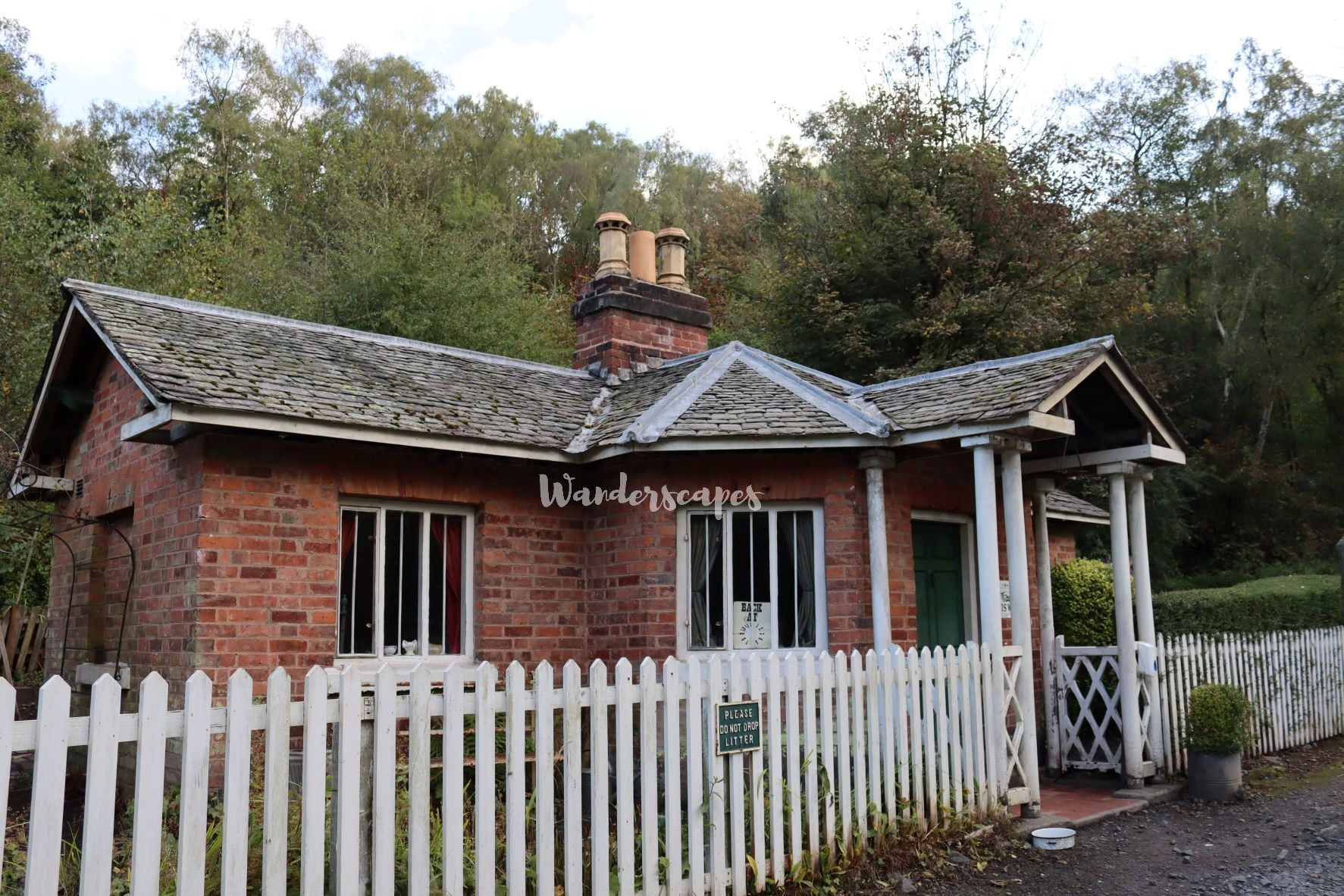
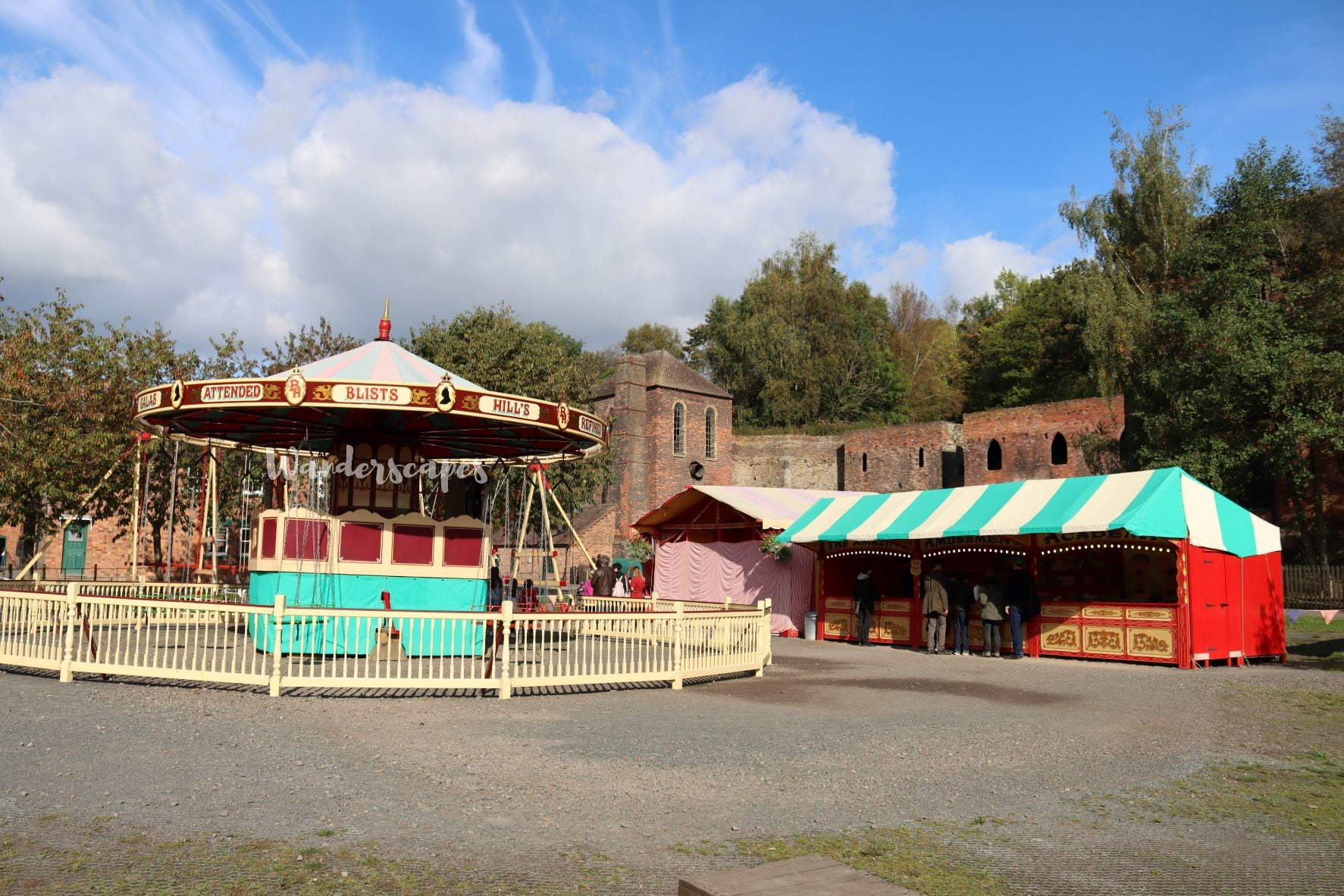
A School
Our next stop was a school which was brought here from somewhere else and built brick by brick. It shows us how a school in the Victorian era looked like. We saw a few classrooms with blackboards, teacher’s table, abacus, charts showing times tables, money value, time, and all other basic information. On the teacher’s table was a ink pot with a dip at a pen, a bell and a switch (probably to punish the naughty among the lot). However, not everybody in the Victorian era could afford to go to school. The wages were so low and living conditions so bad that a family had to send even the children to the mines to be able to afford full meals. For many kids, school was a distant dream.
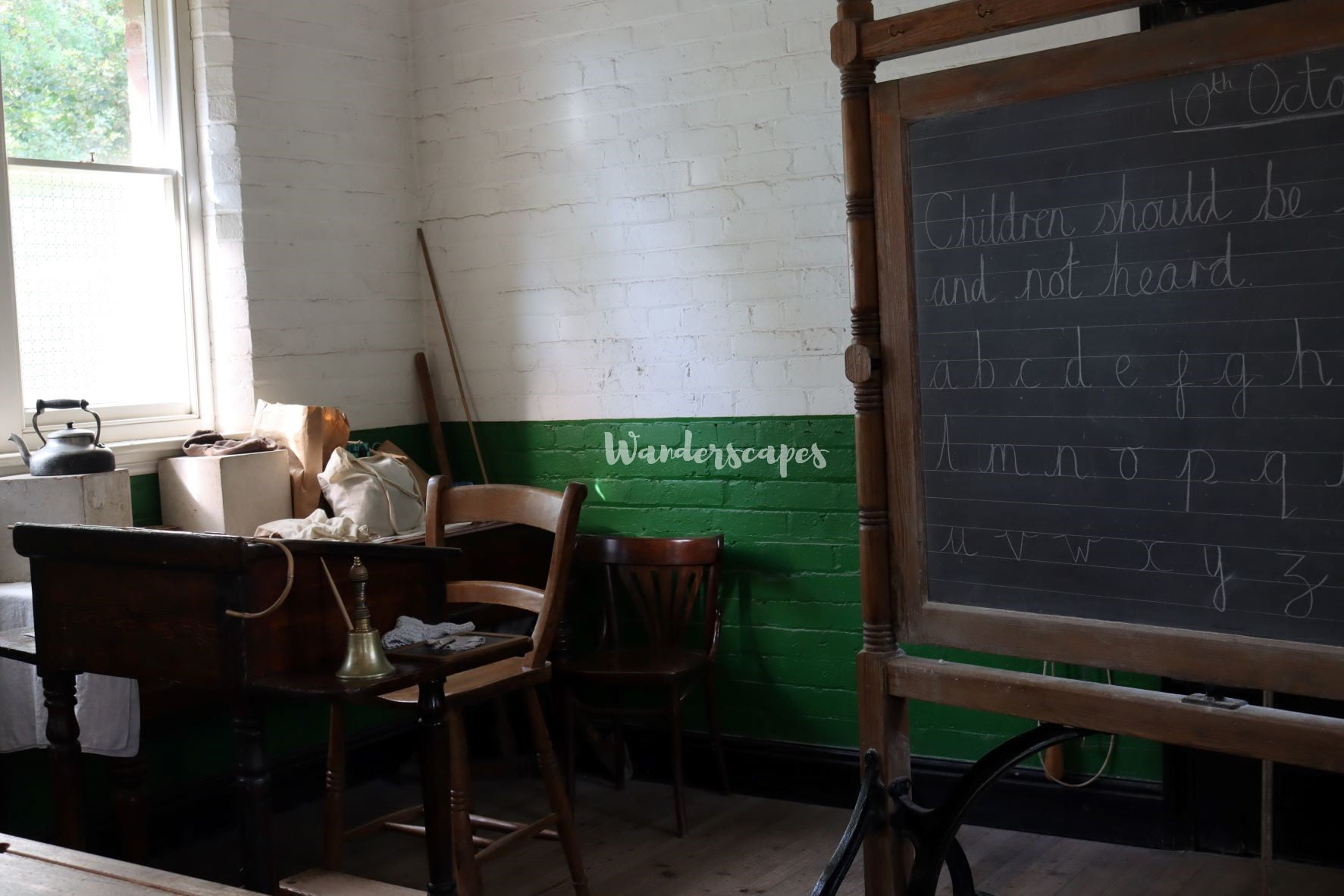
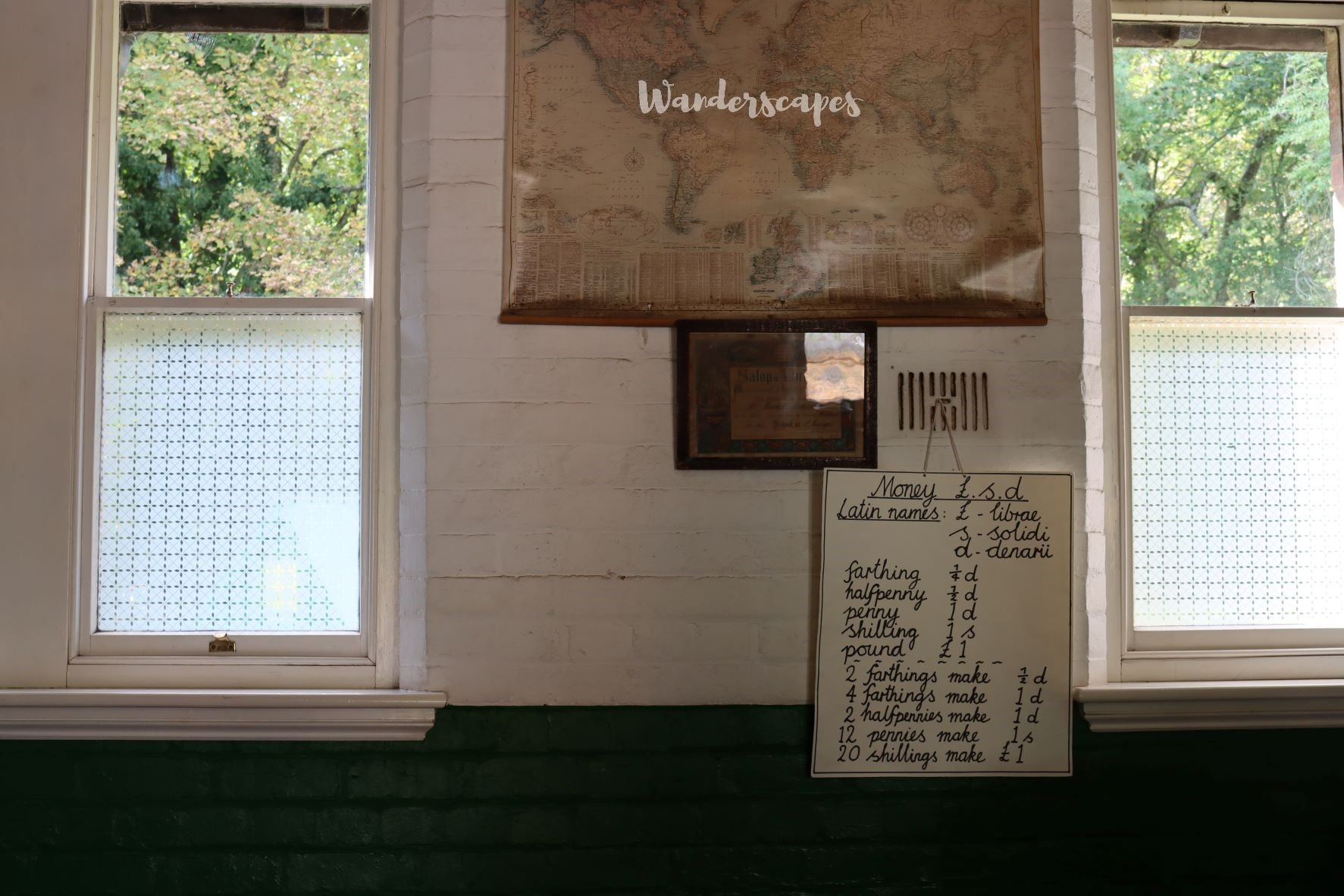
Remnants of the Past
After visiting the school, we saw a few exhibitions showcasing industries like shipbuilding, turbines, engines, rails, and so on. We also saw several workshops including that of a blacksmith. Unfortunately there wasn’t anyone in the workshop to give us info more information about them. You must remember that blacksmith was one of the most important occupations of the time. Without a blacksmith, most houses and industries might find themselves in big problem.
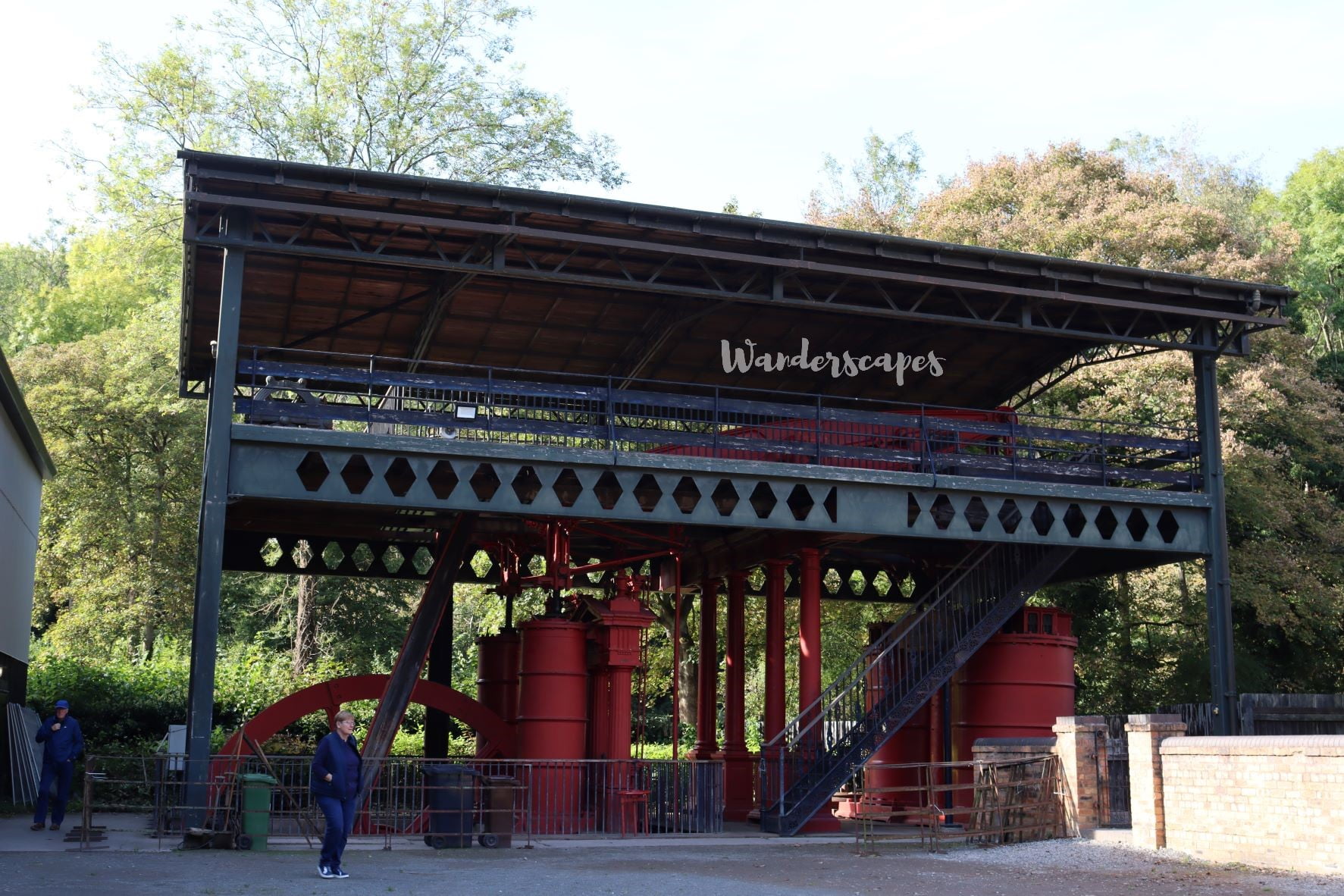
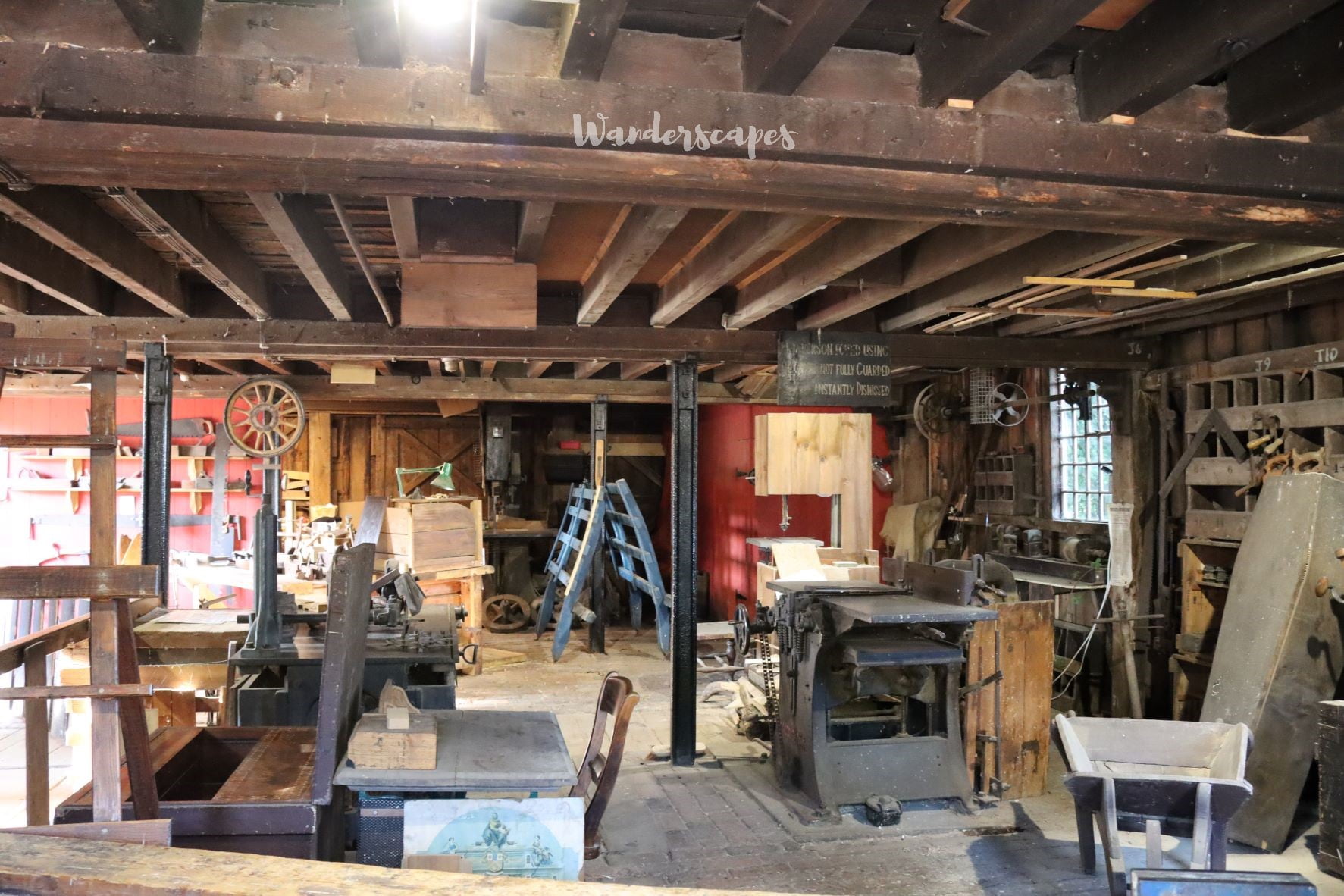
Another attraction was a doctor’s house which was way too big and posher than the miners hut. It had better facilities and space. We also saw the town bakery, but, by then, it had closed for the day and so we couldn’t try any of the items sold there. However, we went into the candle making shop and saw how candles were made back then. A lady manning the candle store was kind enough to explain to us the entire process and it was great to see candles being made right in front of us. The candles were aptly named as Miners candle.
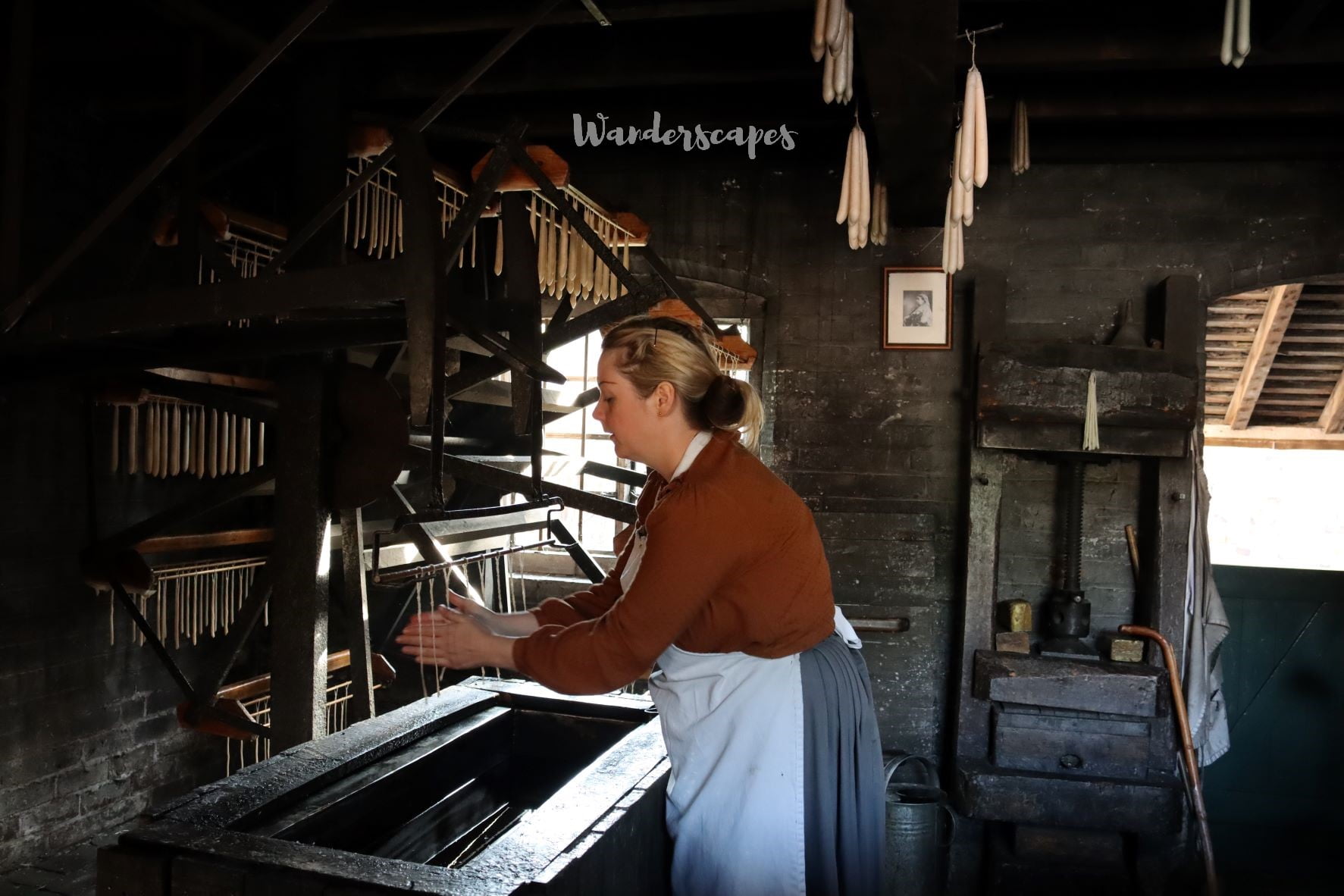
Printing Press in Blists Hill
Our next stop was at the printing press. The press receives orders from various organisations like the post office and other shops in the area. The printing press prints posters, newspapers, notices, advertisements, and colour posters. The person in charge explained to us the whole process and showed us how the pedal powered printing machine operates. He also told us how they do the composition, letter spacing and other such details.
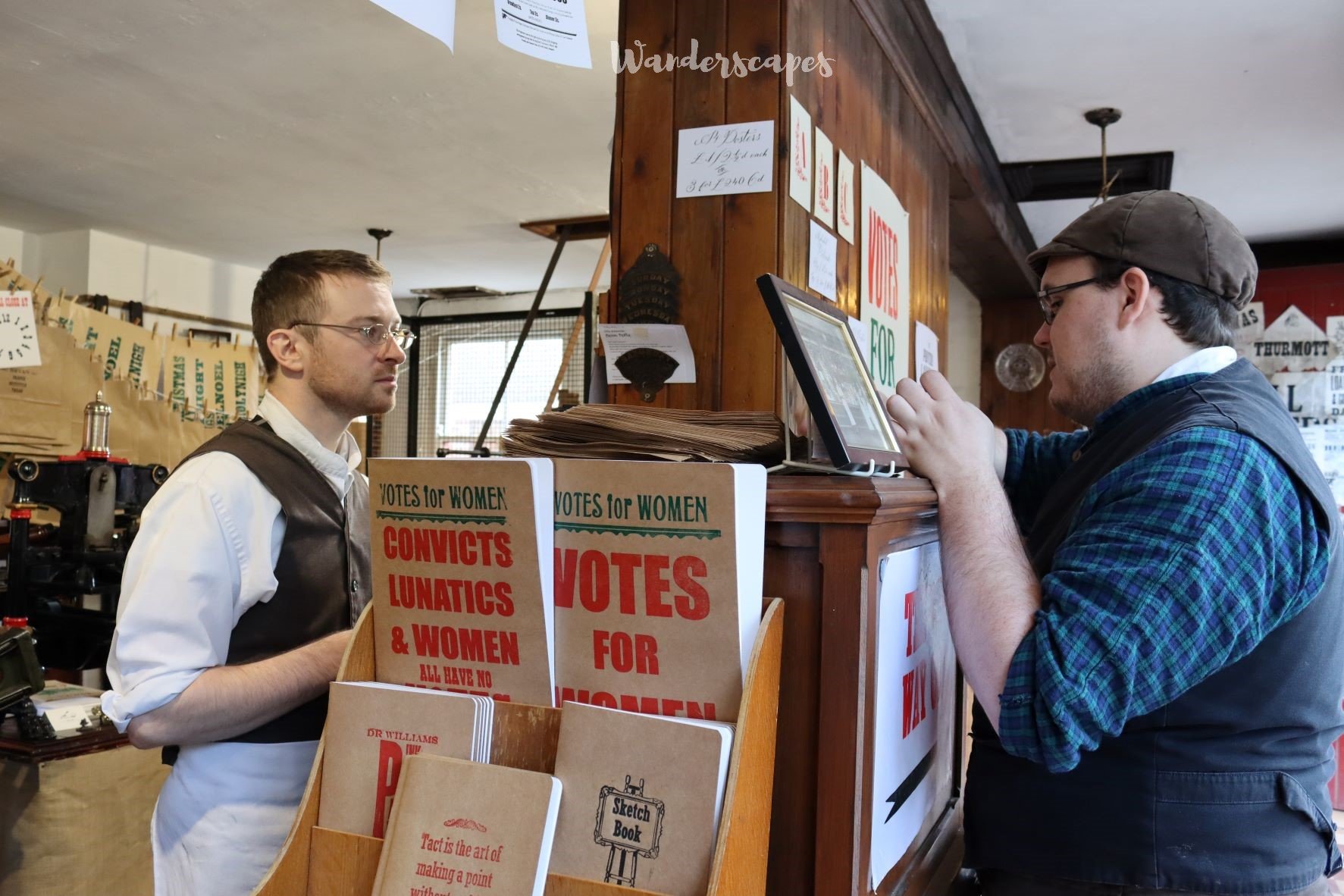
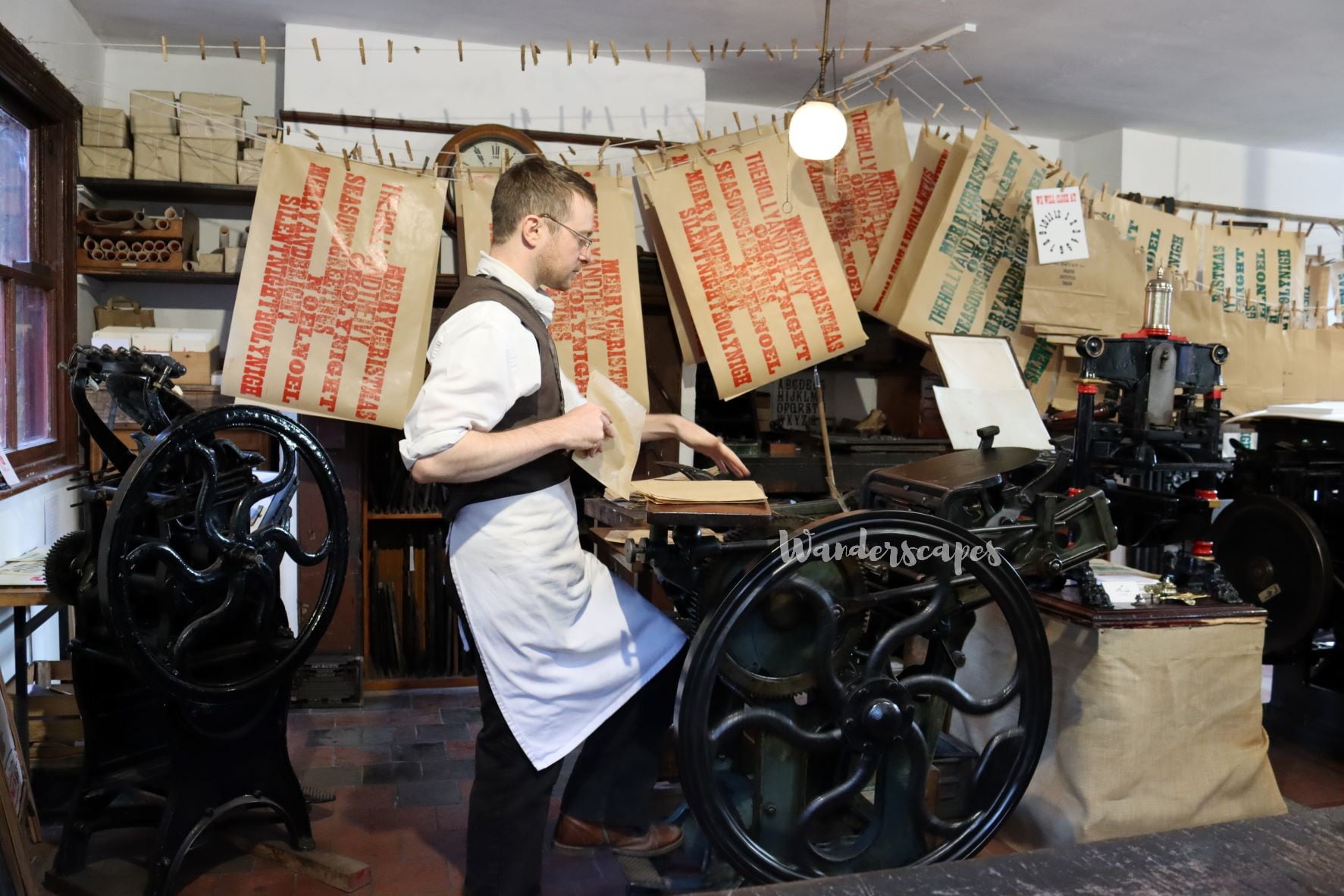
Finally, we saw the blast furnaces that were at the centre of Victorian era Coalbrookdale. These furnaces might have worked day and night in those days but now they are nothing but massive museum pieces to remind us of the past glory. Although the furnaces don’t function anymore, they are the remnants of a past that powered an entire nation towards a new direction.
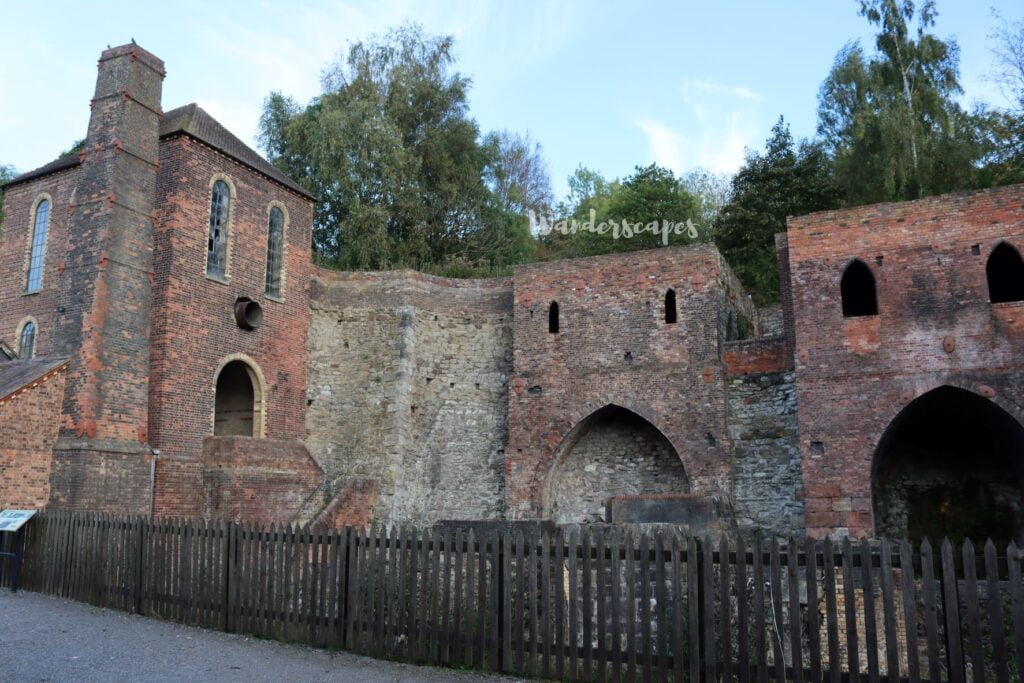
Blists Hills, An Unforgettable Experience
By then it was time for us to take leave of this wonderful town. We had spent close to six hours in Blists Hill and yet we couldn’t cover everything the town had to offer. We did manage to see all the important stuff but there is so much more to see in this magnificent town from the past. It felt like time travel, something we never imagined we could do so easily. Hence, we would say that our experience at Blists Hills is so different from our experience at all other museums we ever visited. We never saw or experienced anything like this before – a chance to experience life as it was in the early 1900s is something that we never imagined we would ever do in our lives.
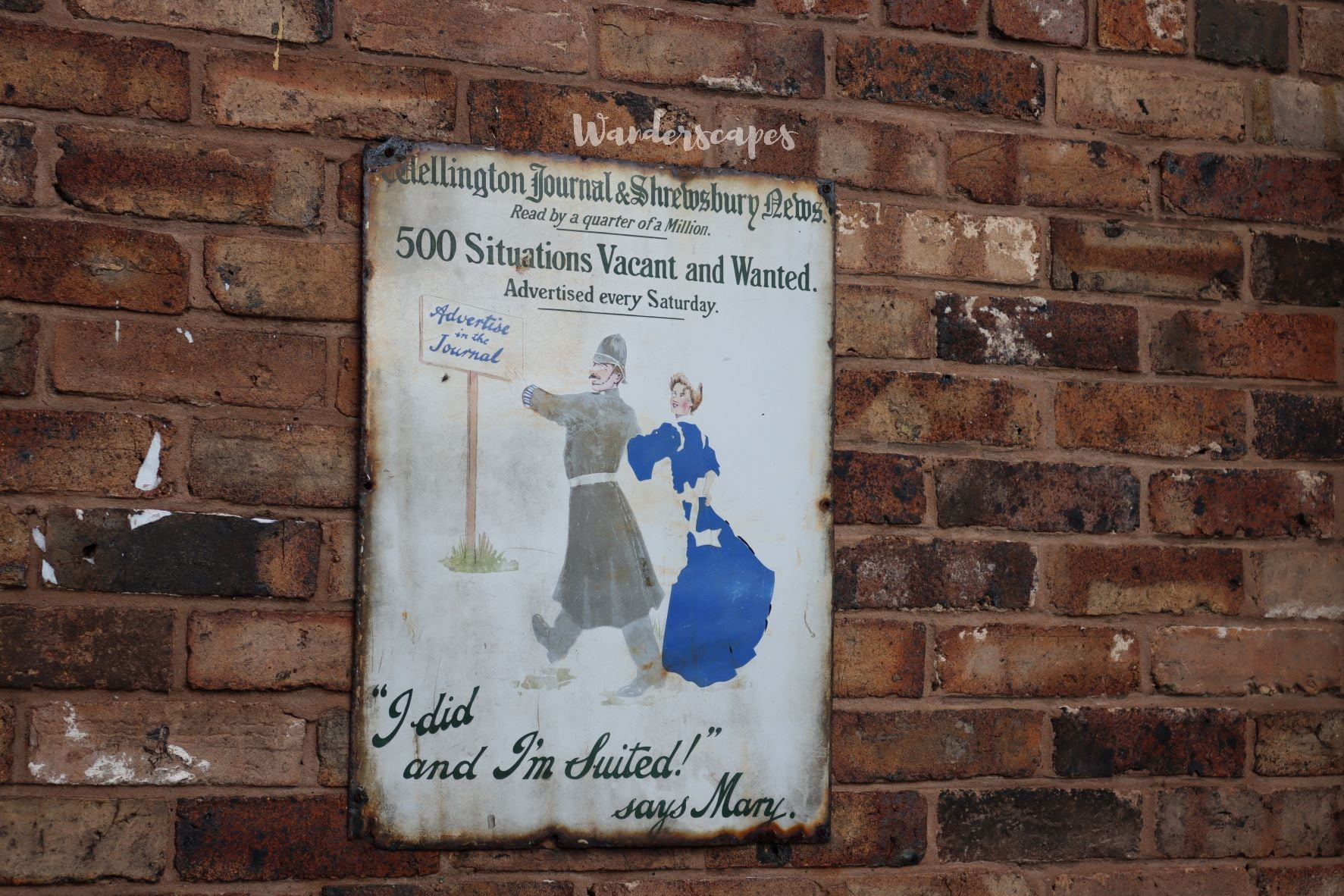
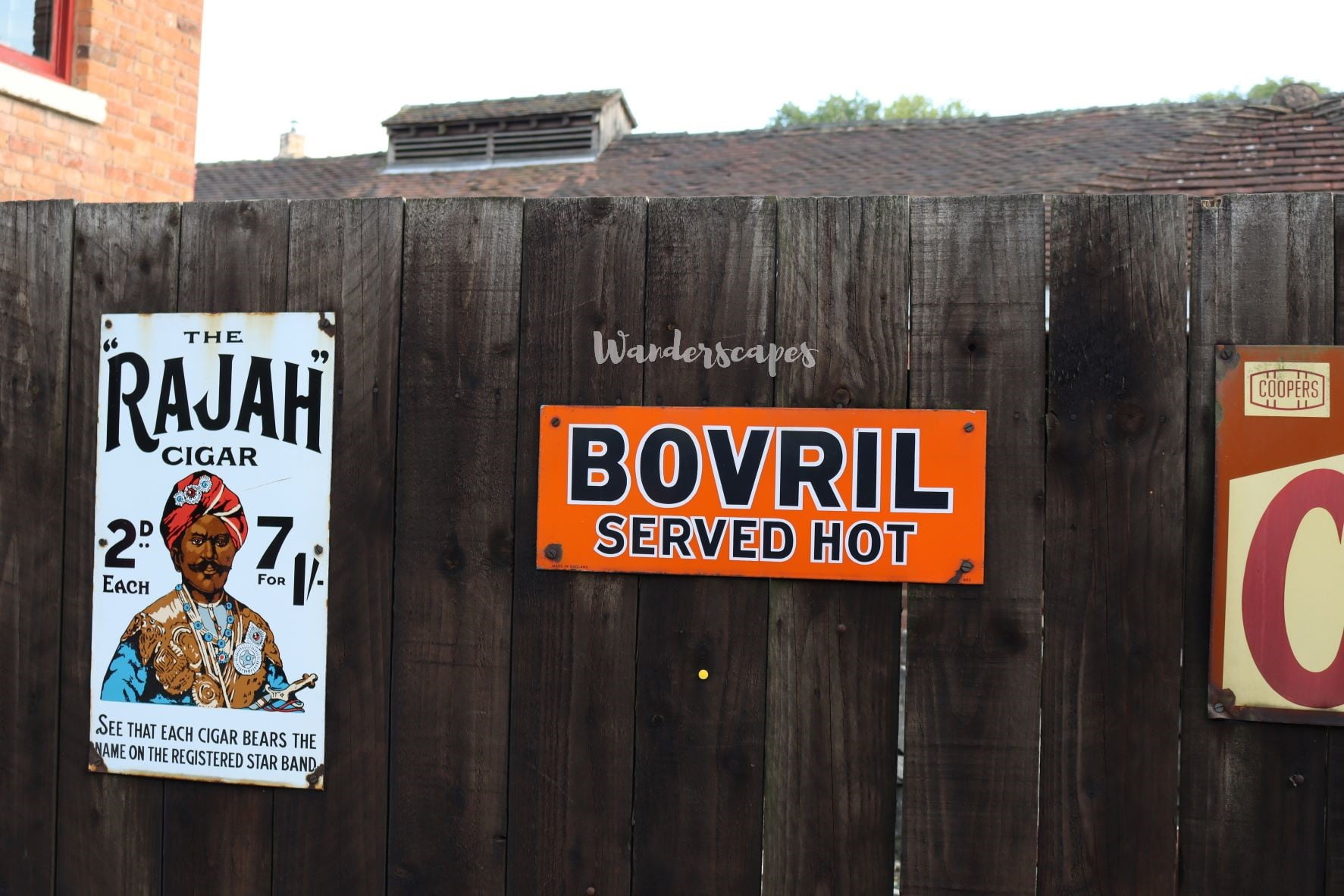
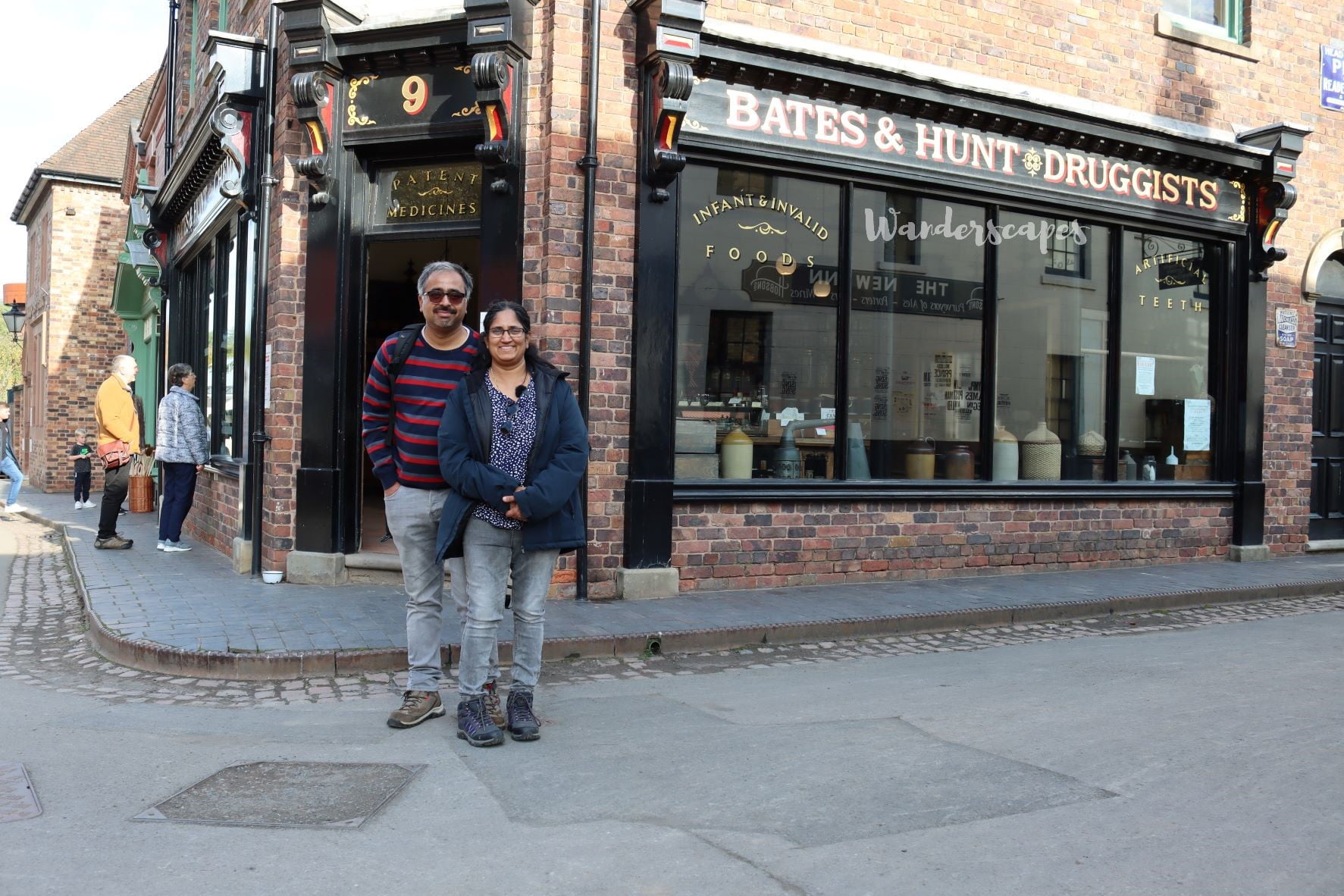
The Past, Present & Future
Our visit to Blists Hill gave us an opportunity to go back in time and experience life as it was 100 years ago and we are ever grateful for that. Although we could know much more about the past, it also left us appreciating the present more than ever. We realised the importance of what we have and what we take for granted. So many things which seem a necessity now was a super luxury in the past.
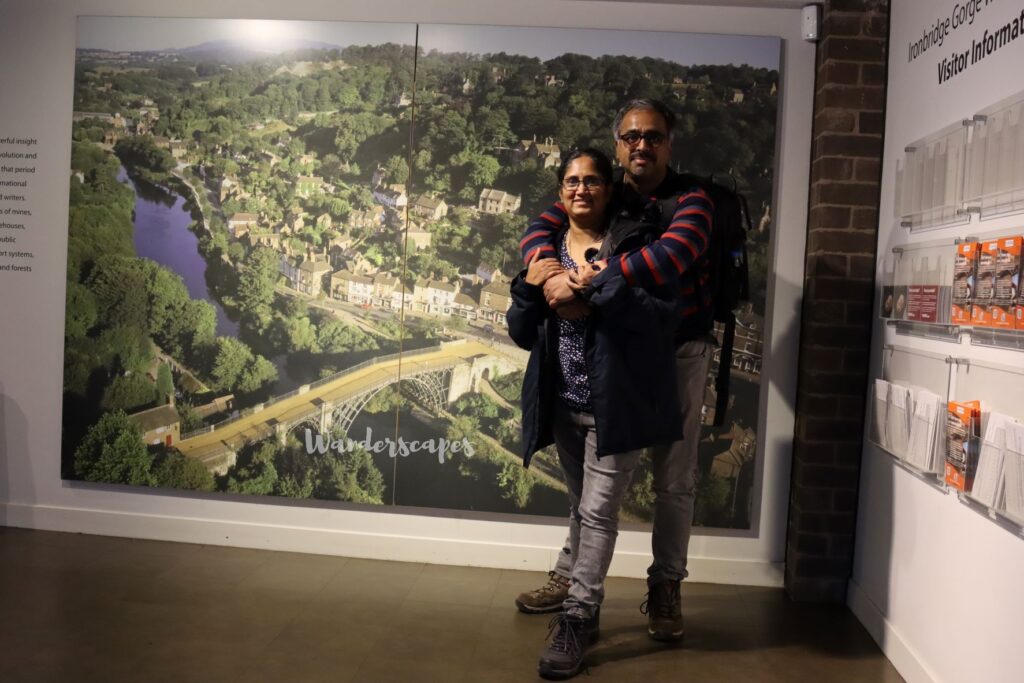
In that sense too, the visit to Blists Hill is an eye opener not only as a lesson of the past but also as a appreciation of what we have right now. It is a reminder to live in the present and to be thankful for what we have in our lives. Even when we might feel we have very little in life, the truth is we have more than enough. So this is a celebration of past and an appreciation of present and an opportunity to anticipate future with the hope that it brings even more better things in life.
Watch our vlog on Blists Hill here.
All our previous blogs are here.

